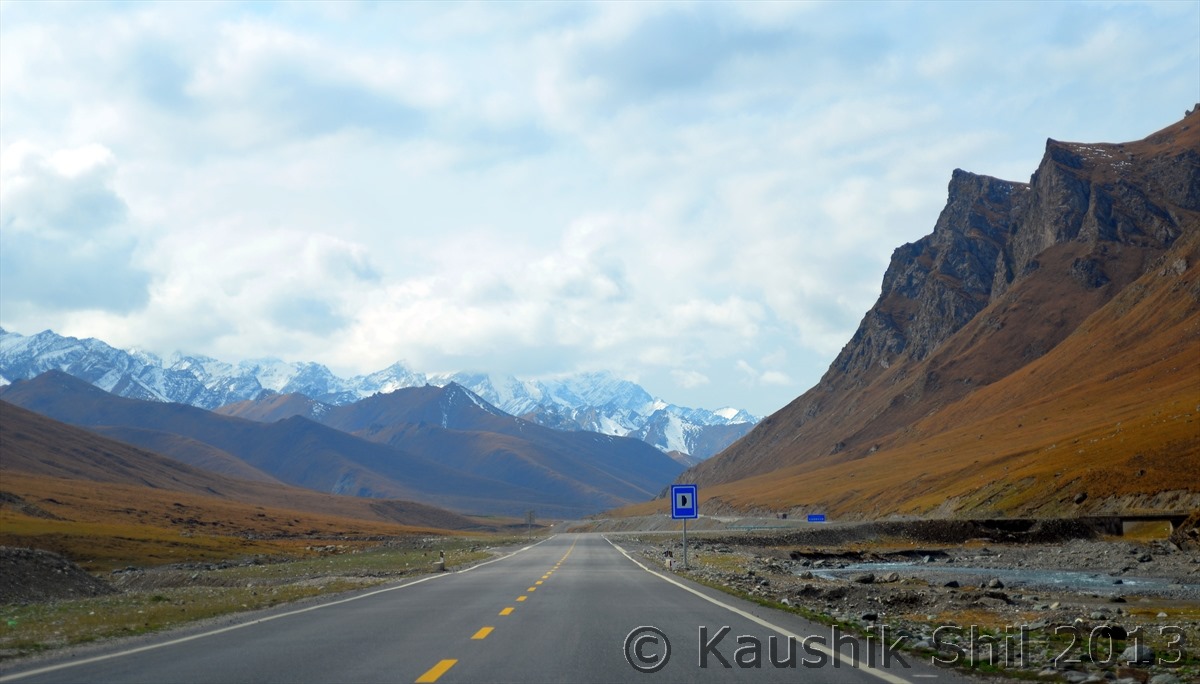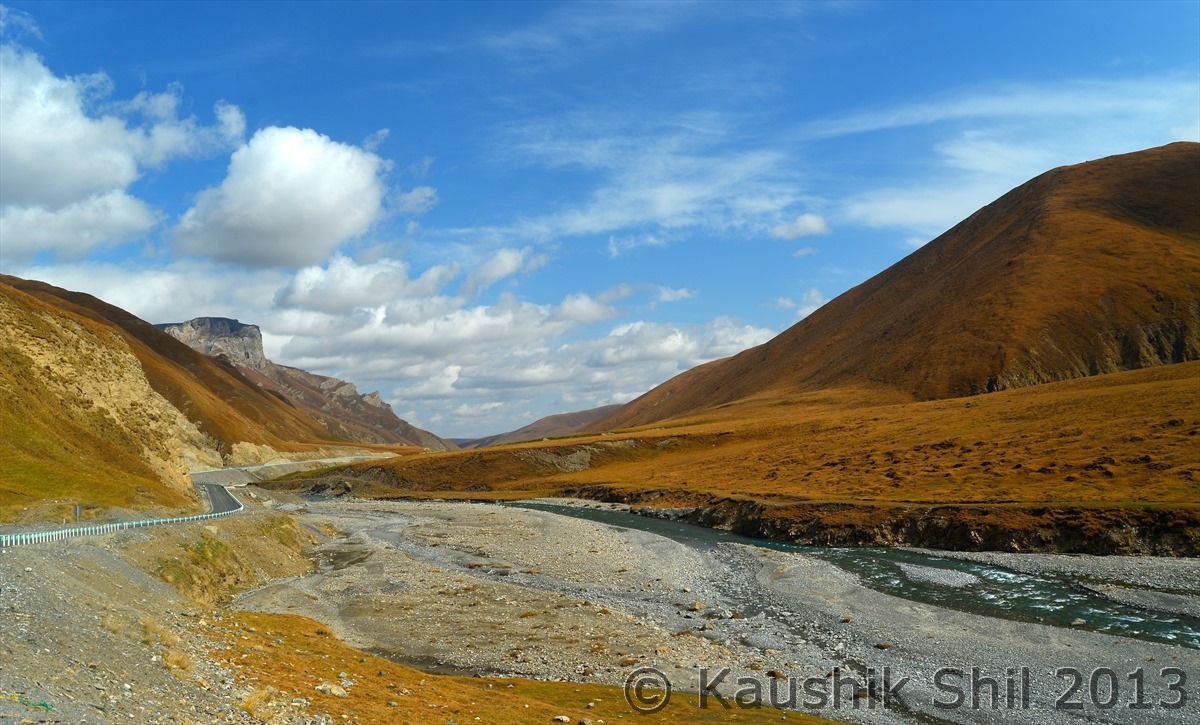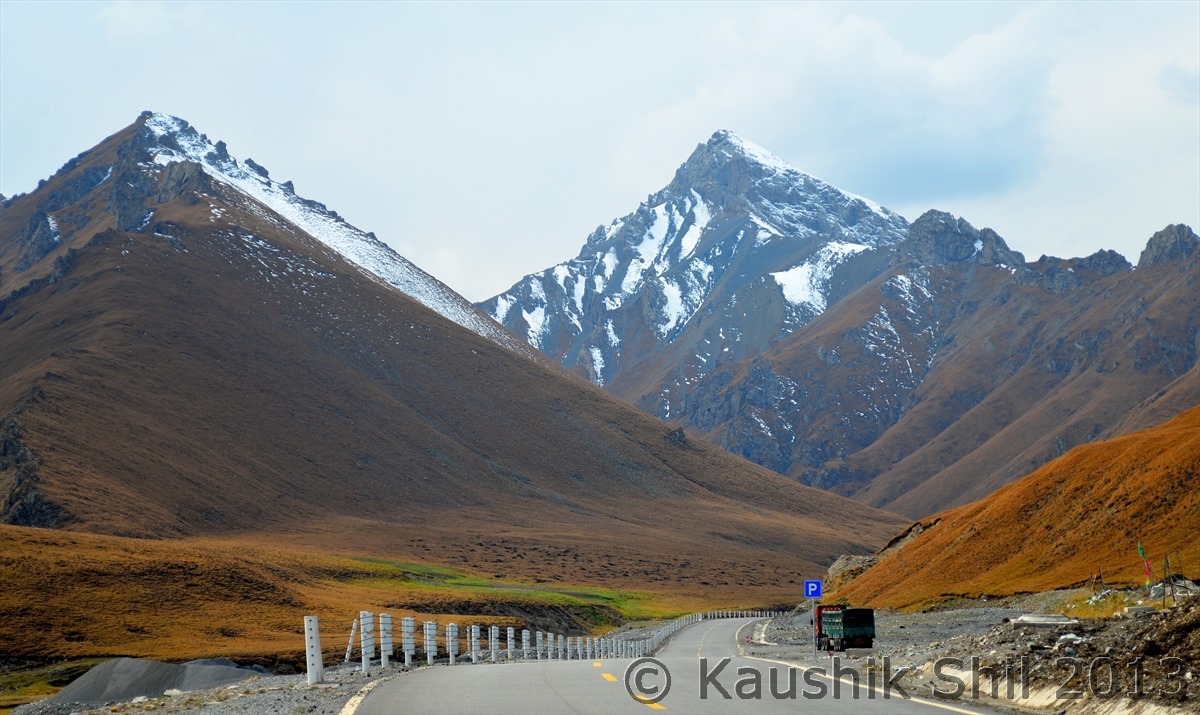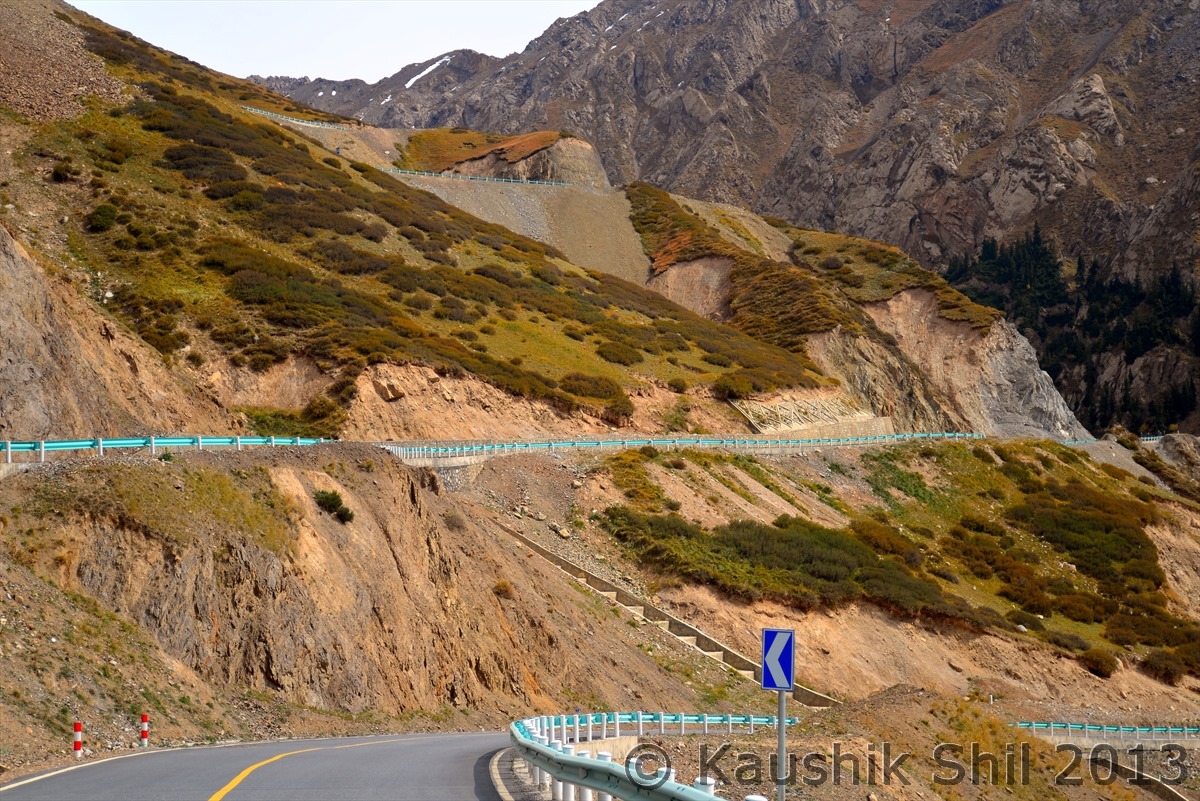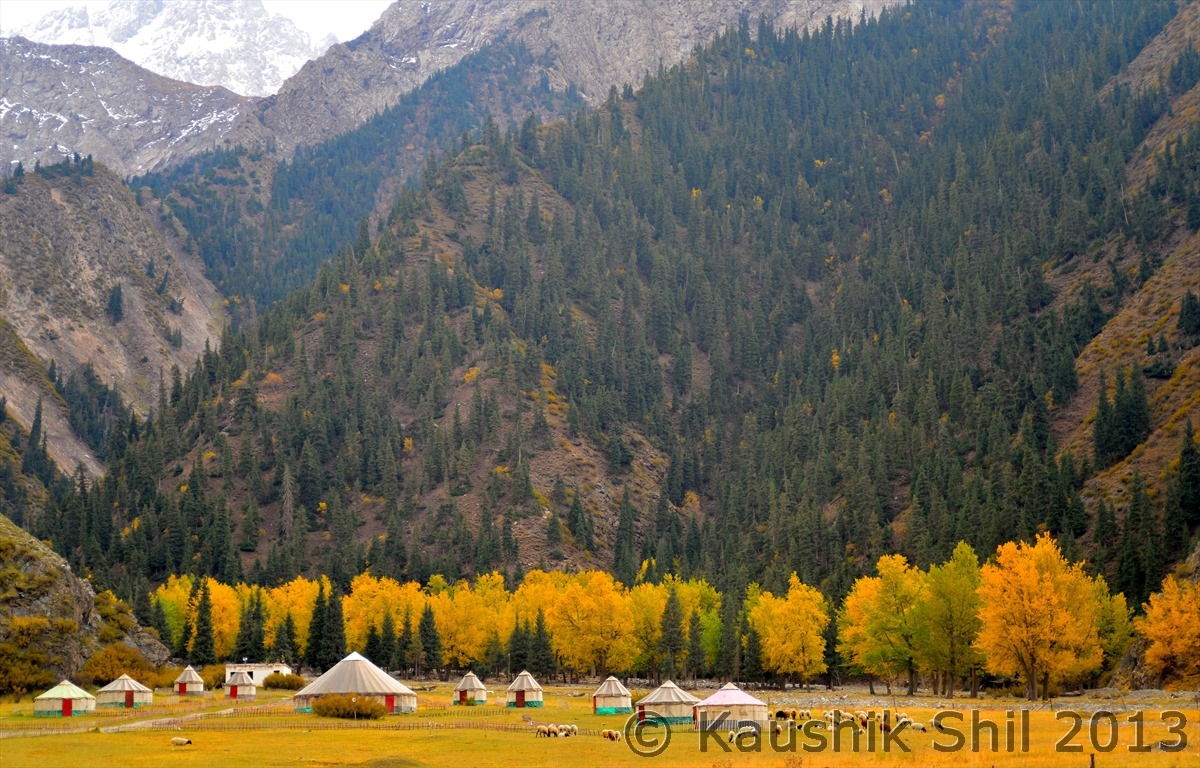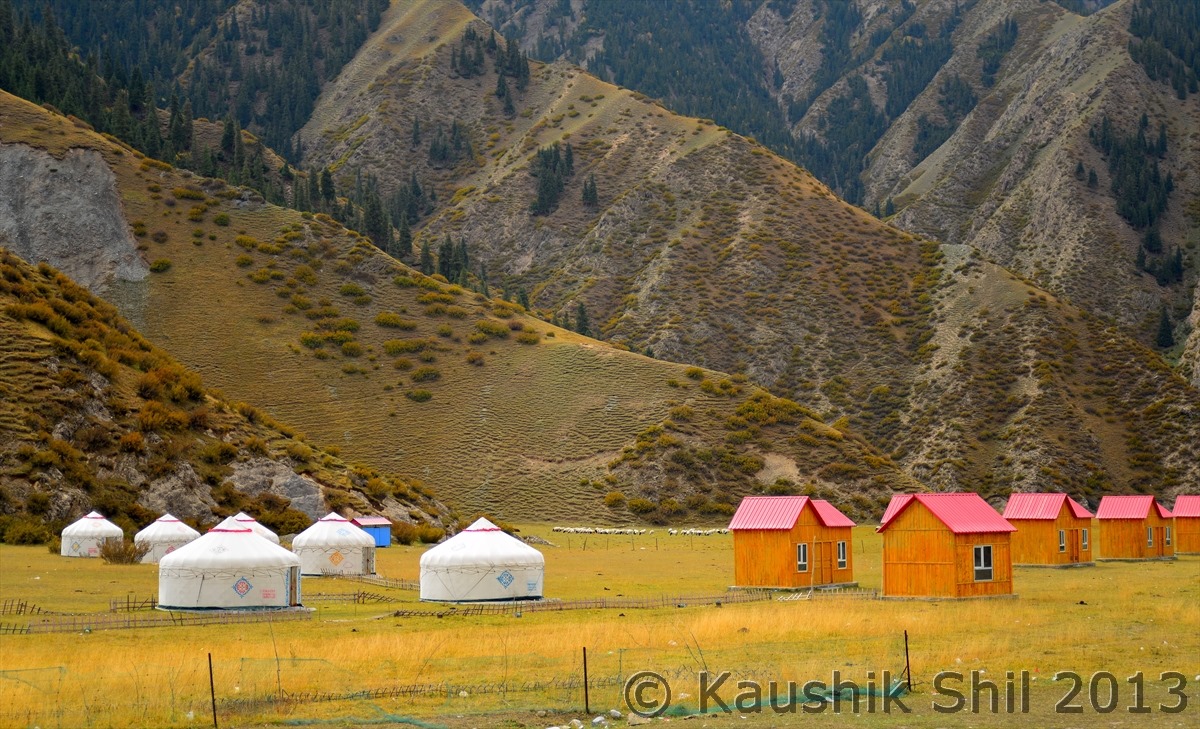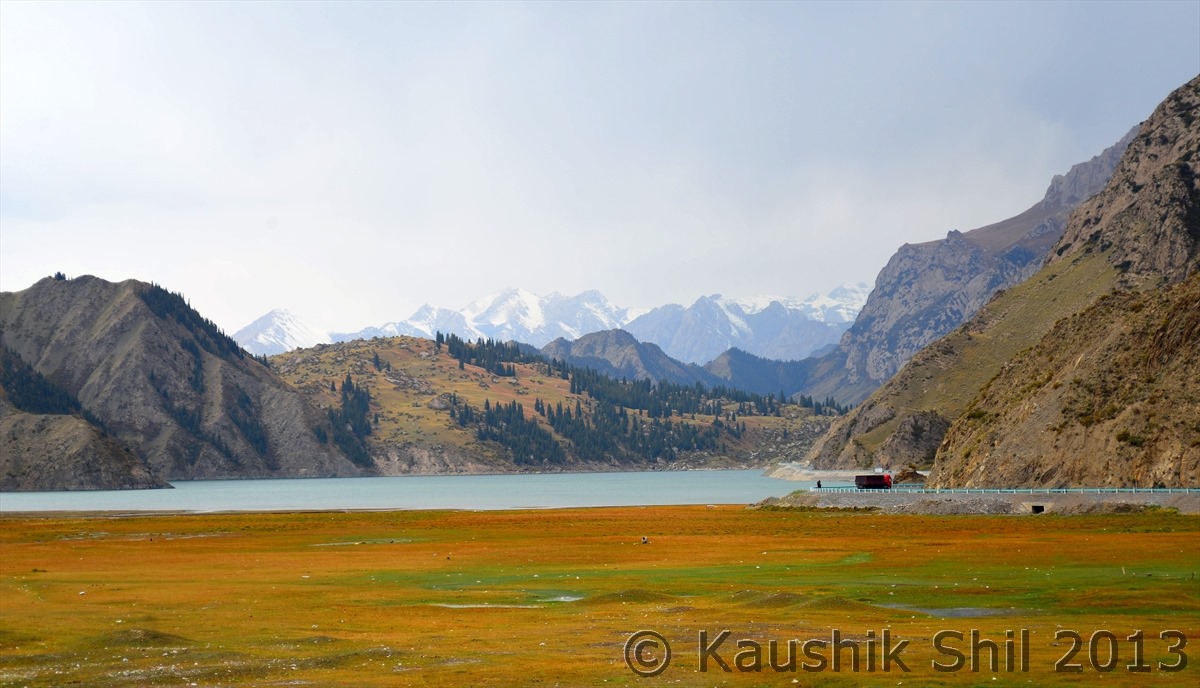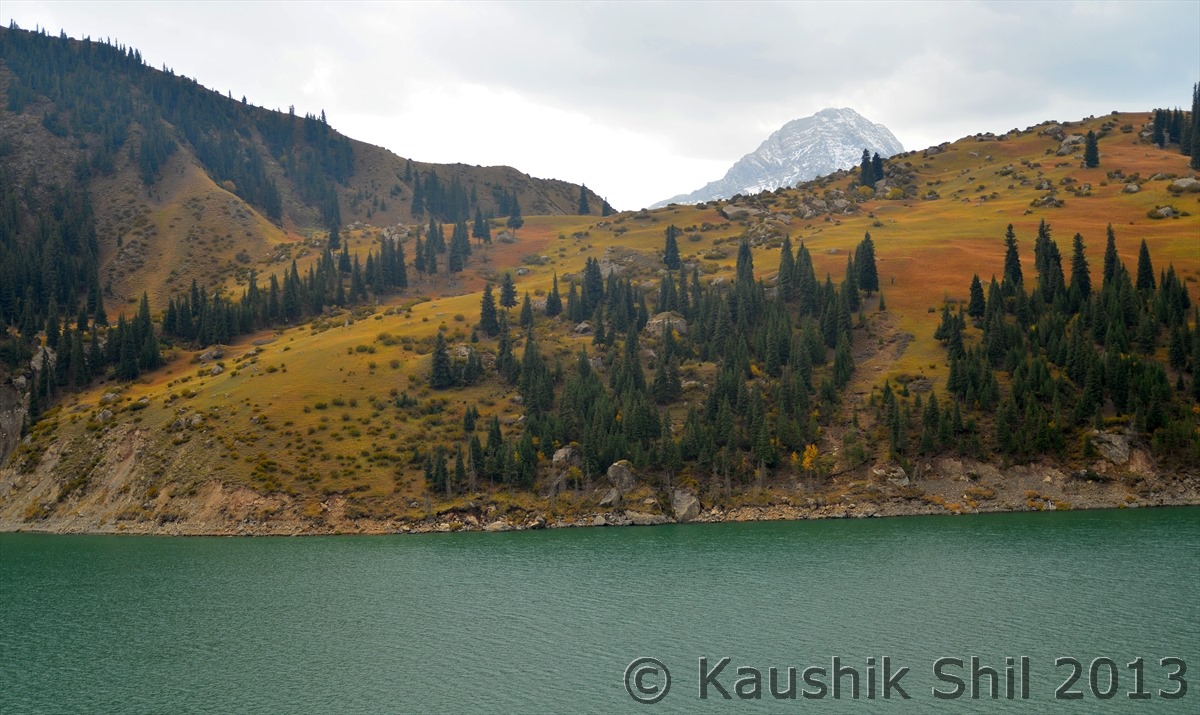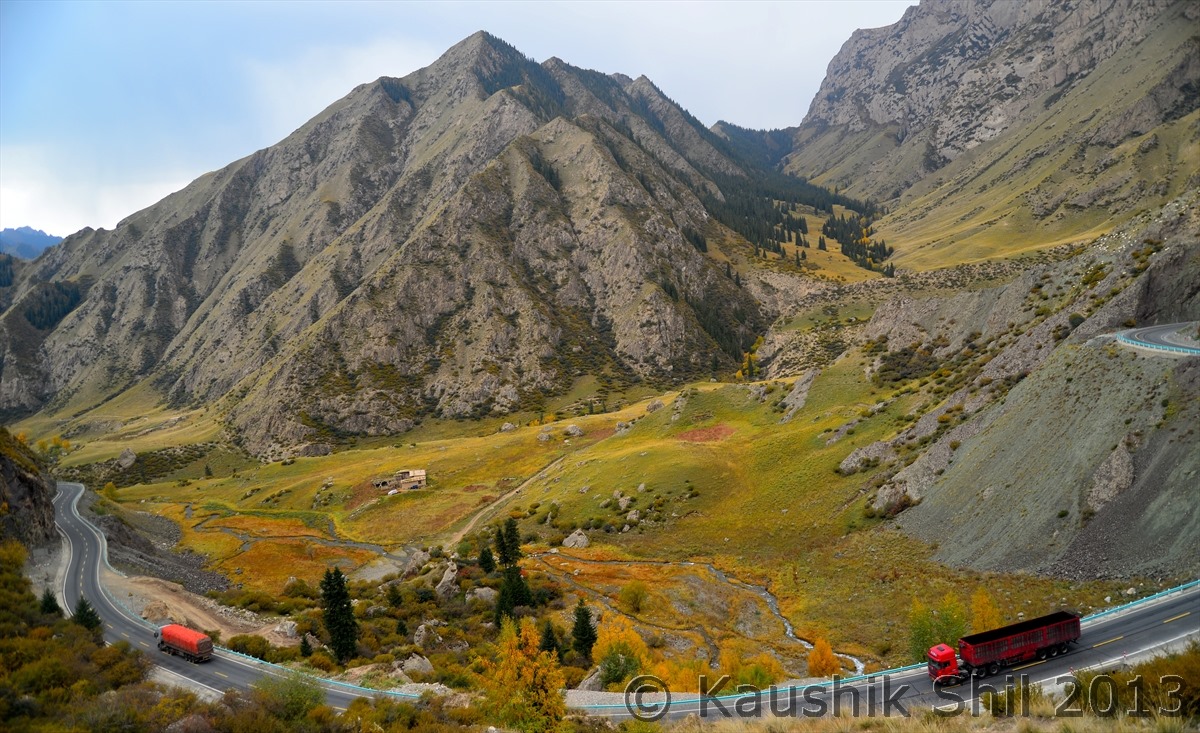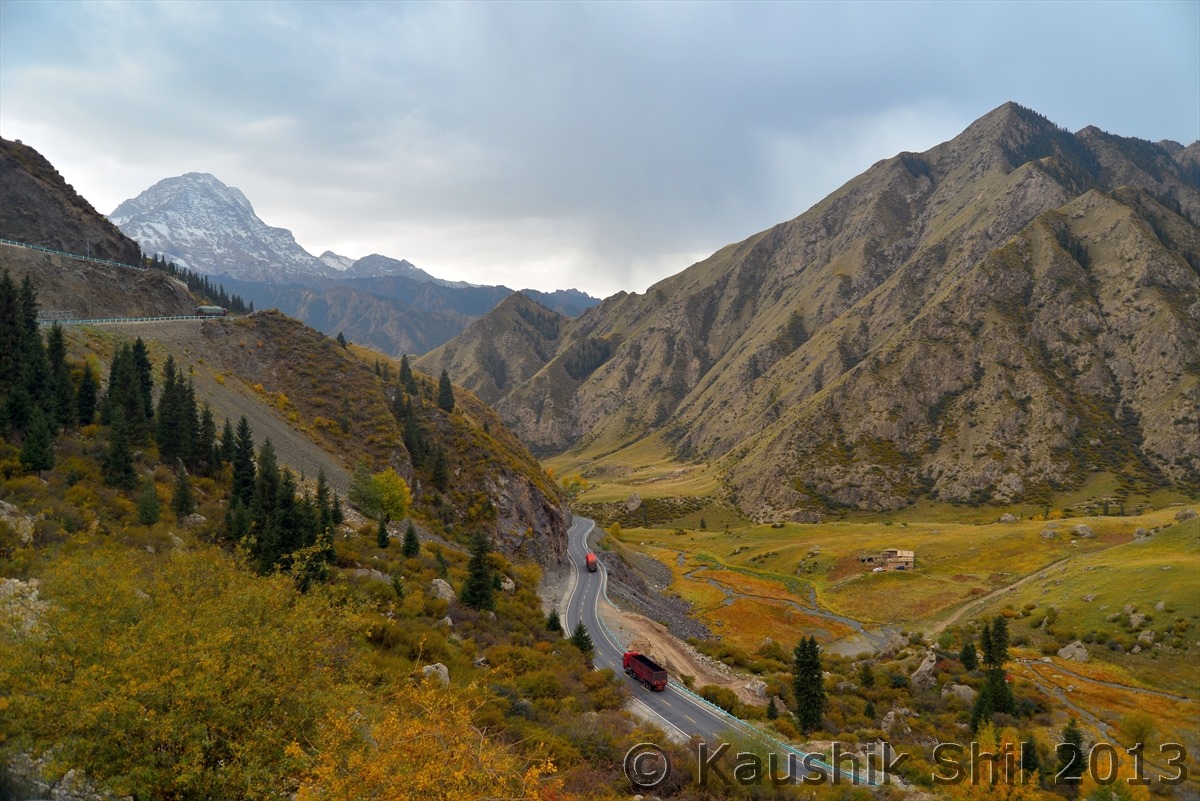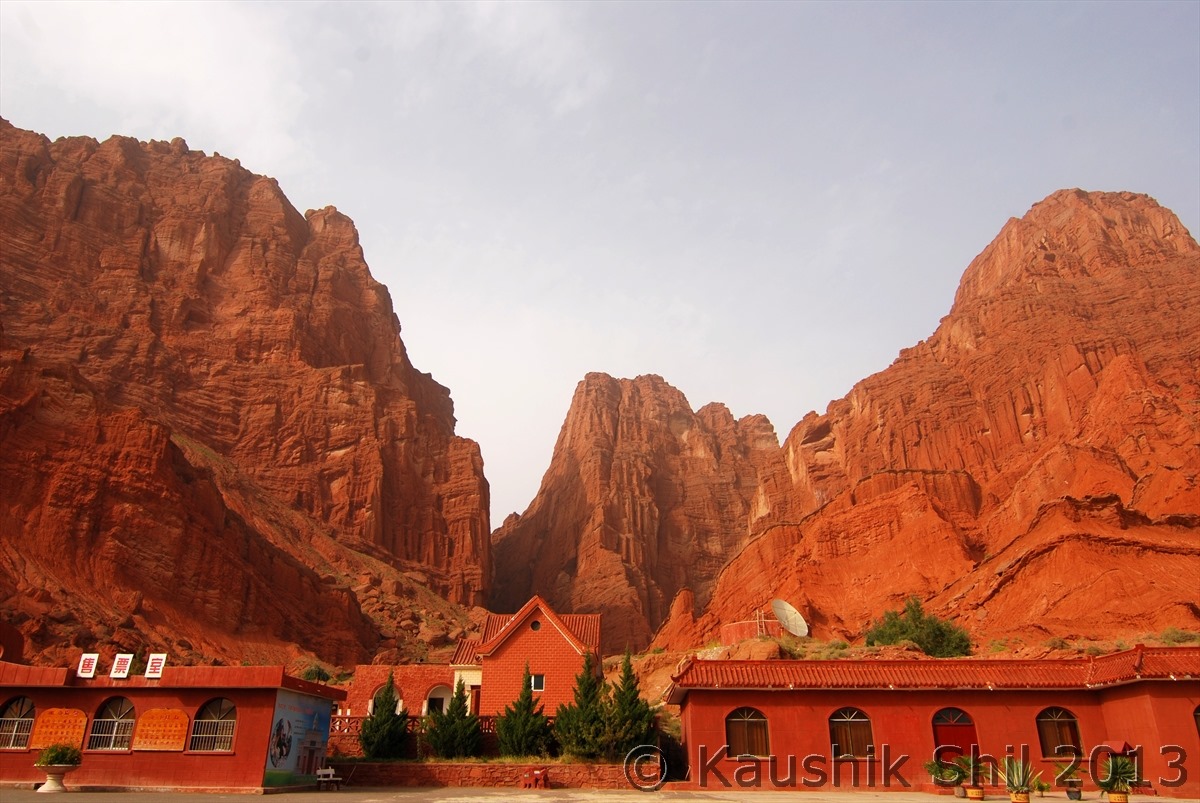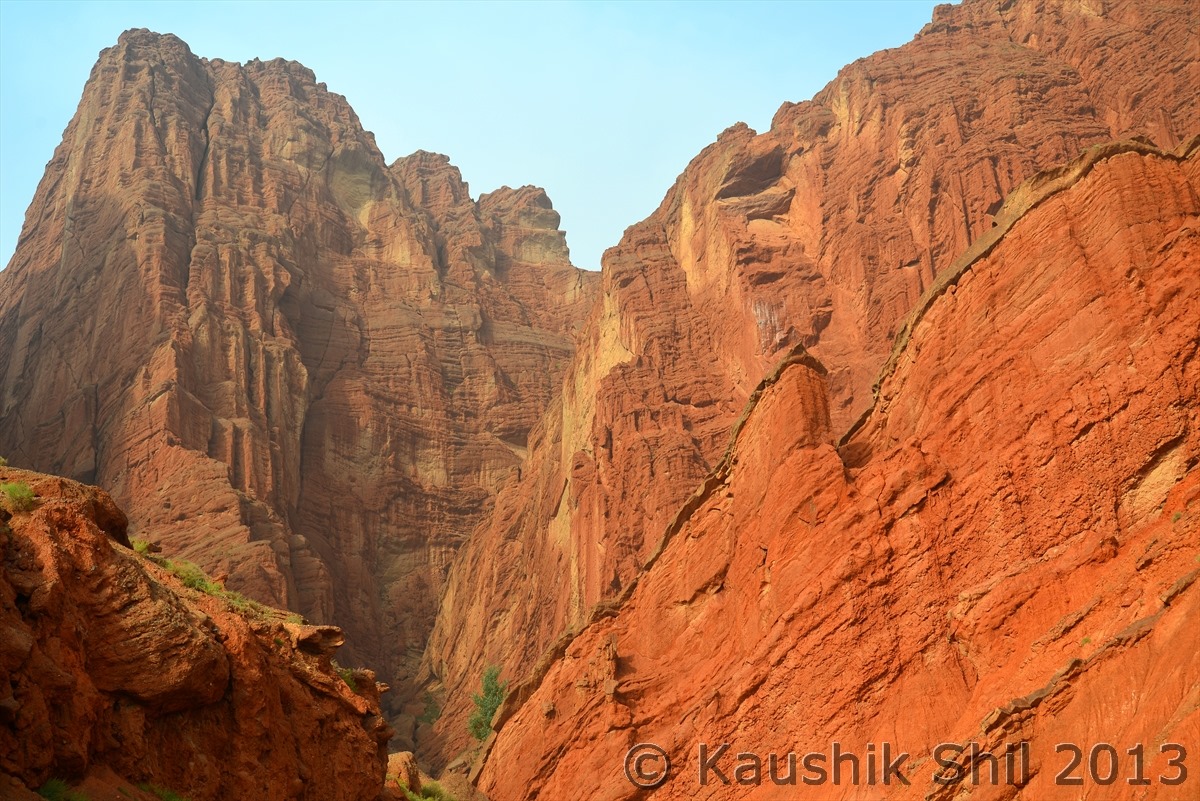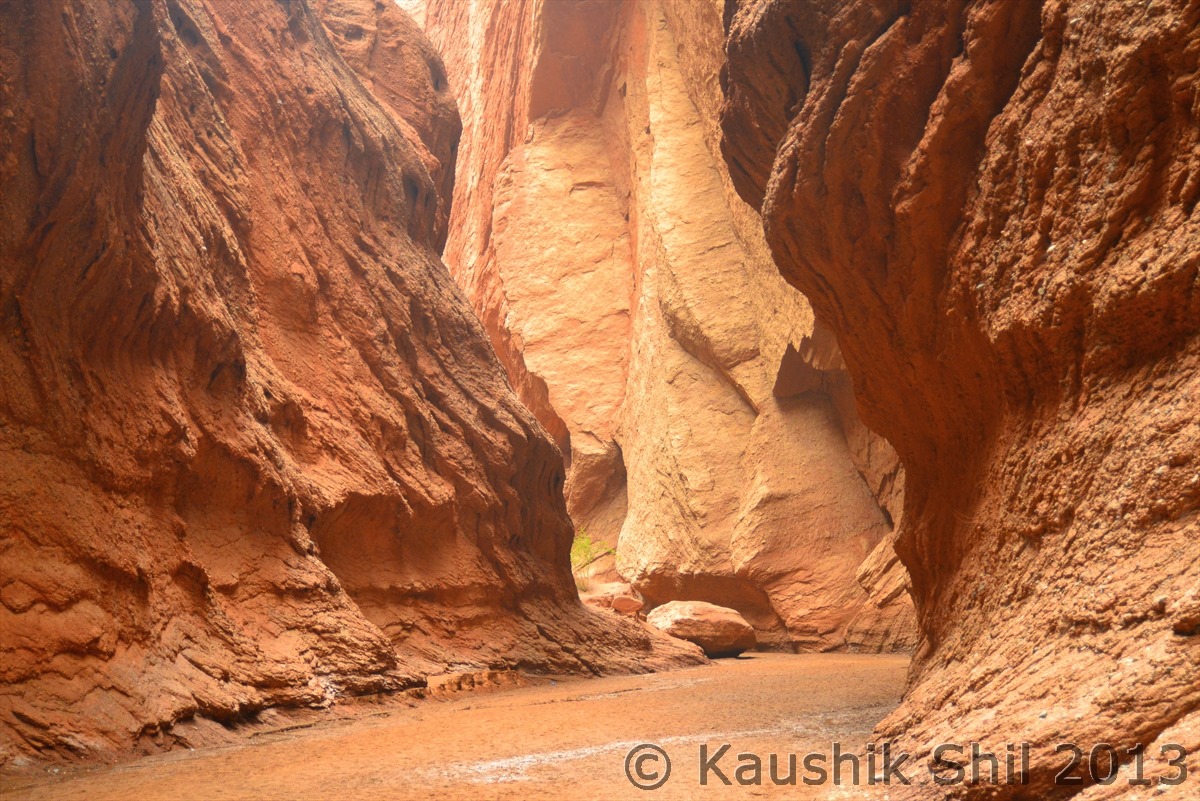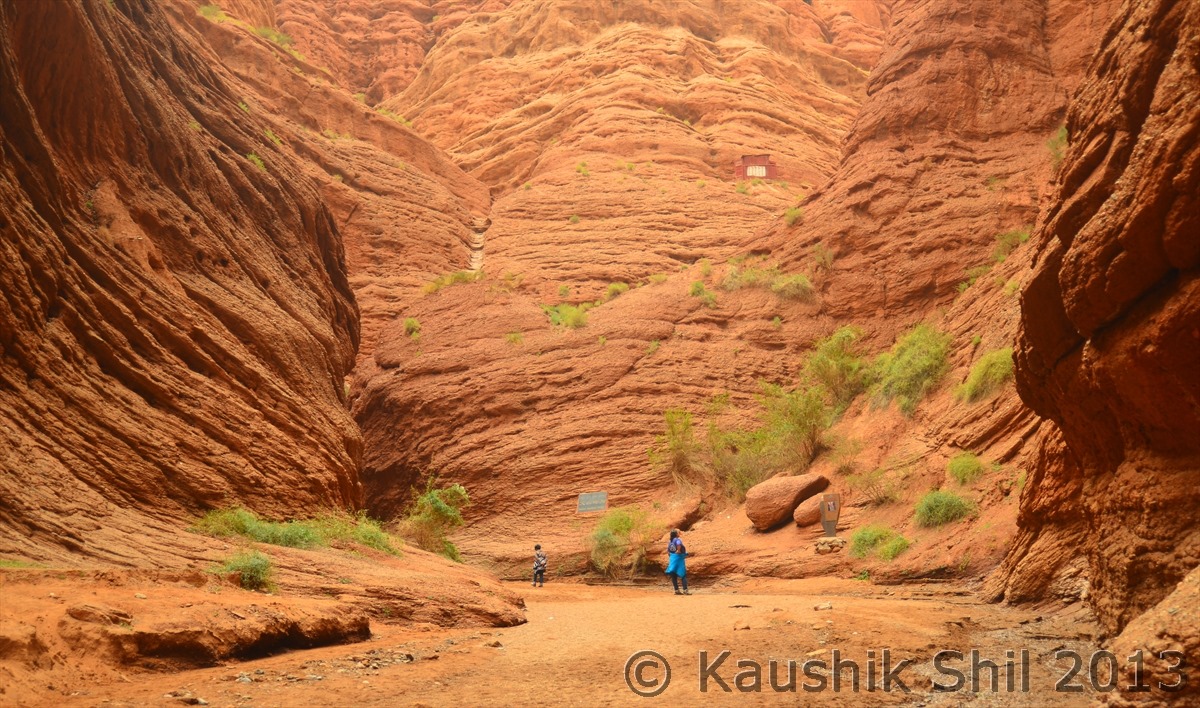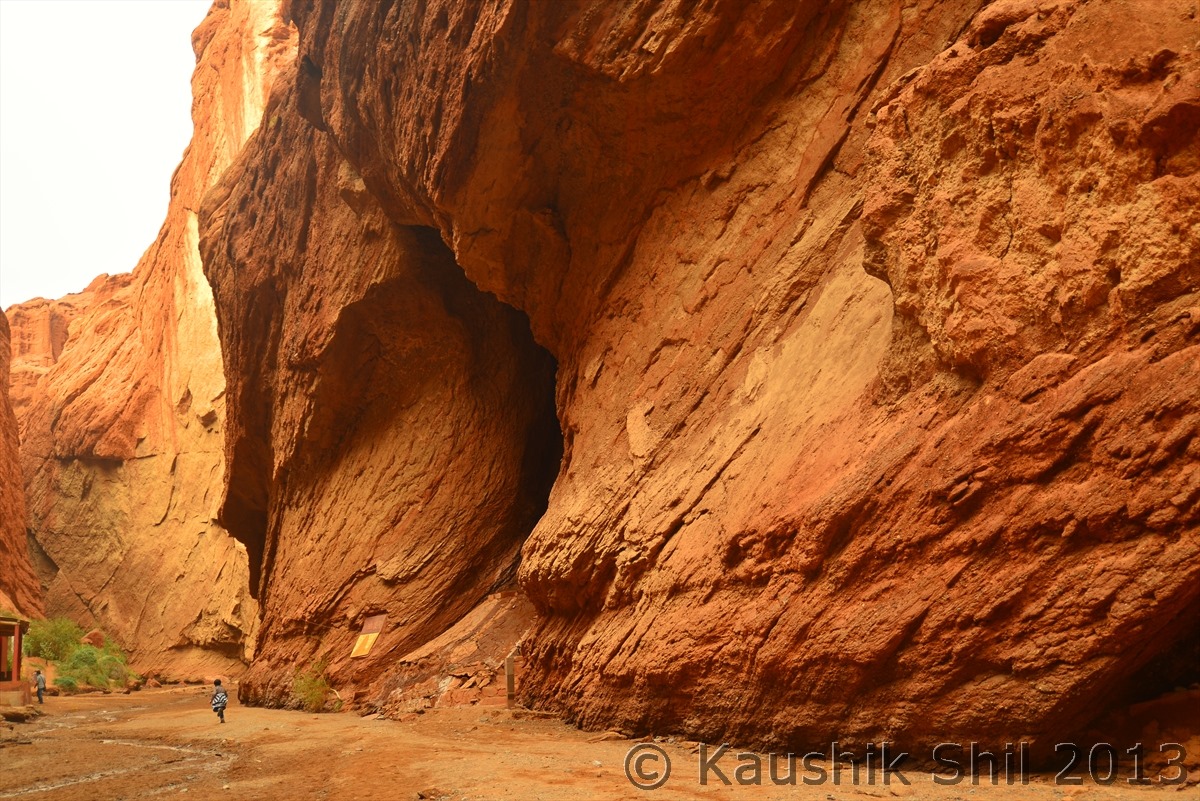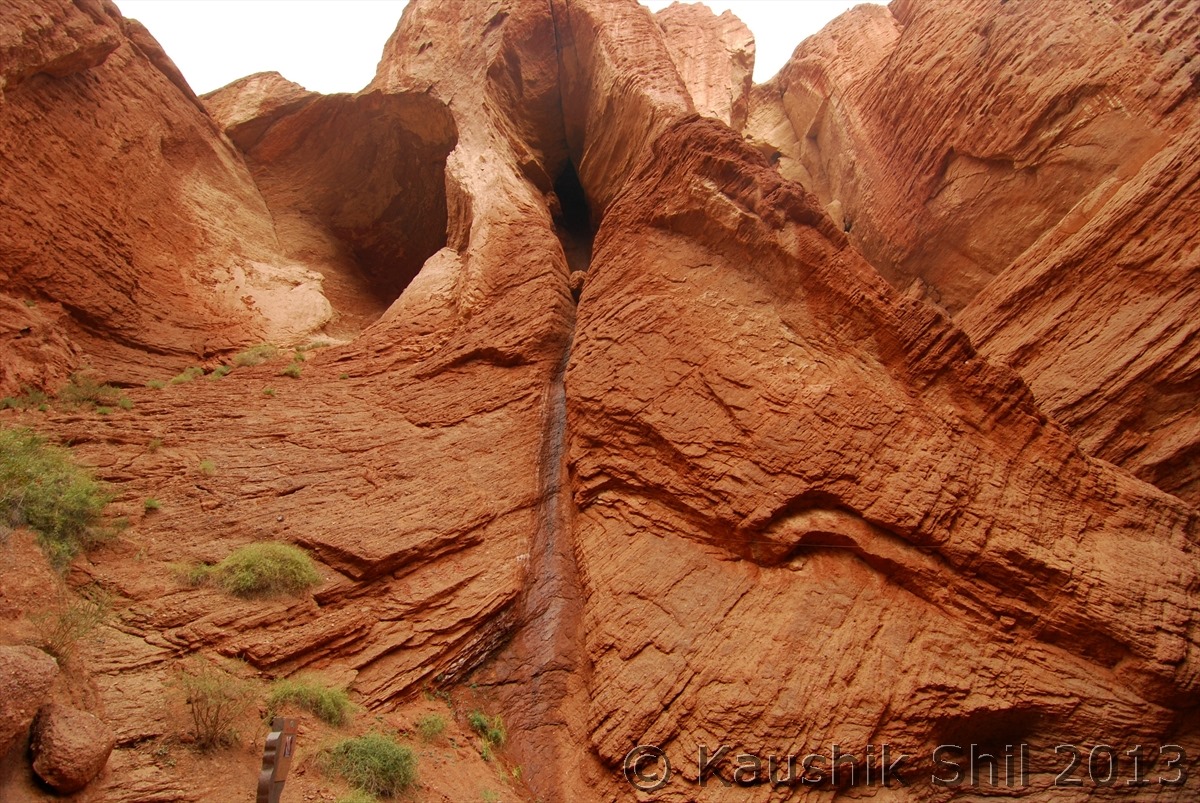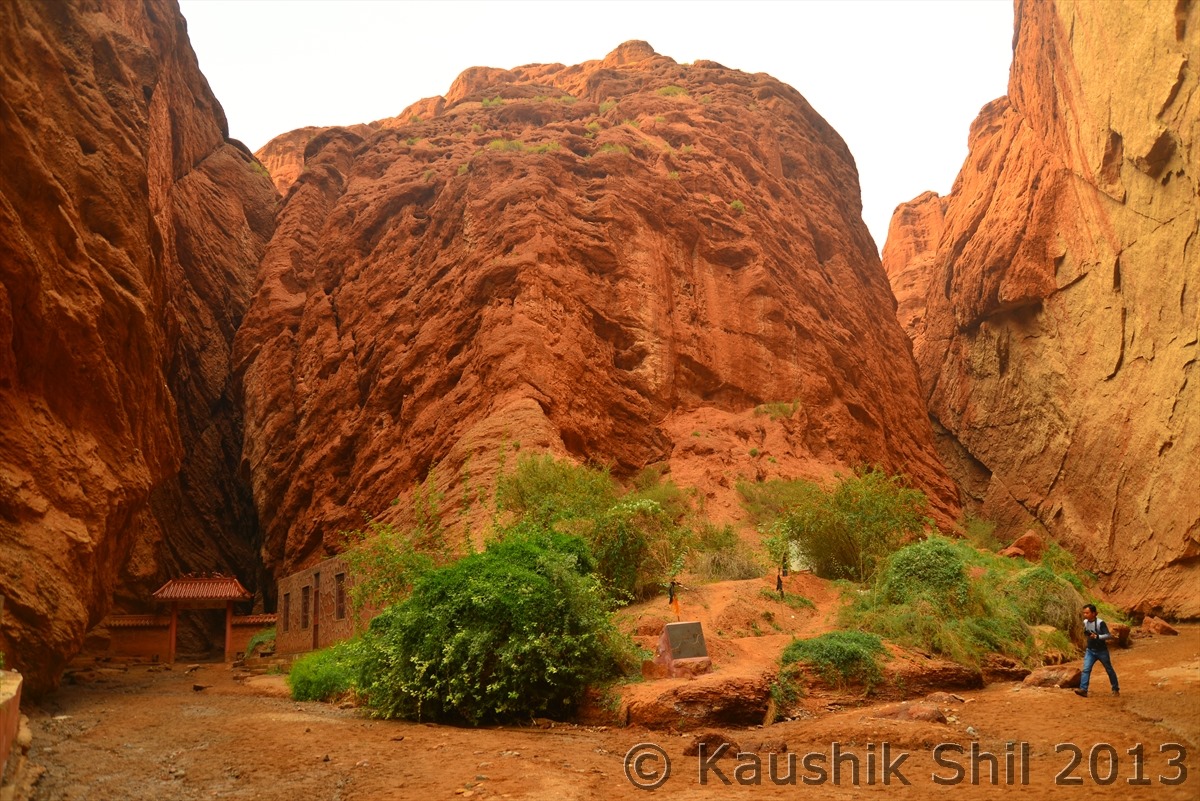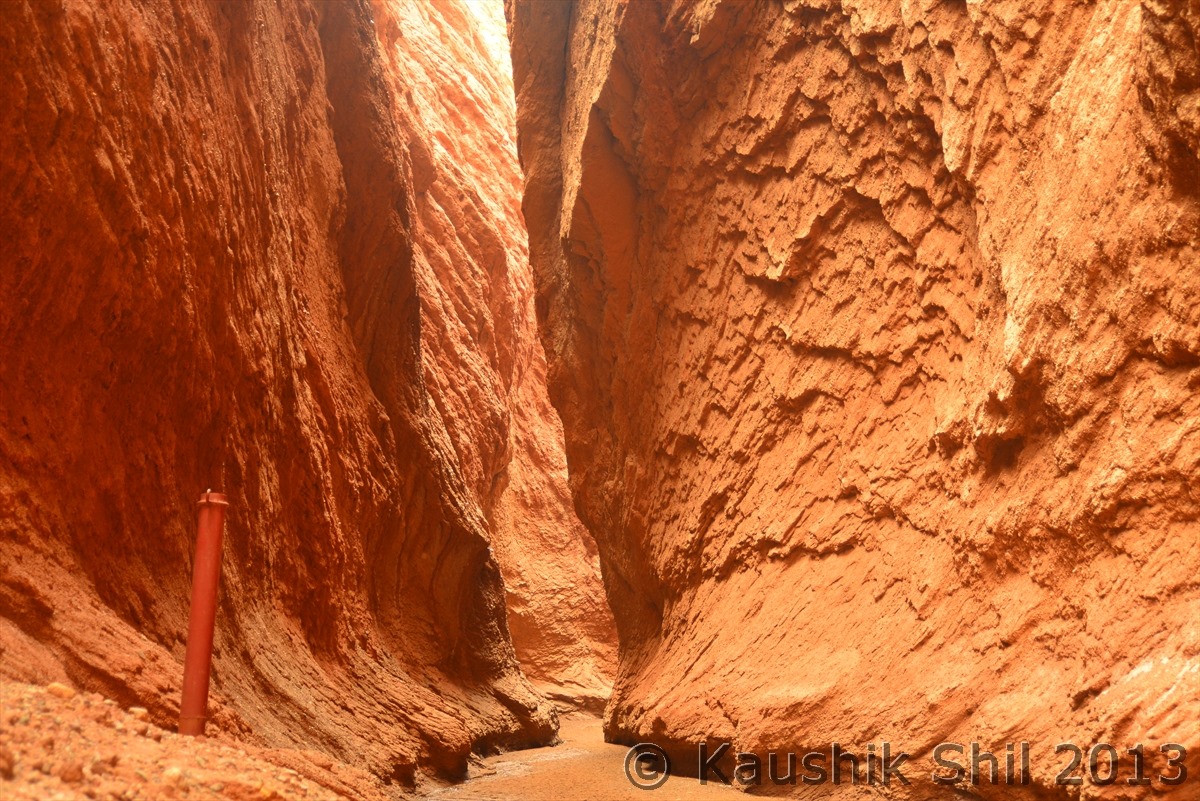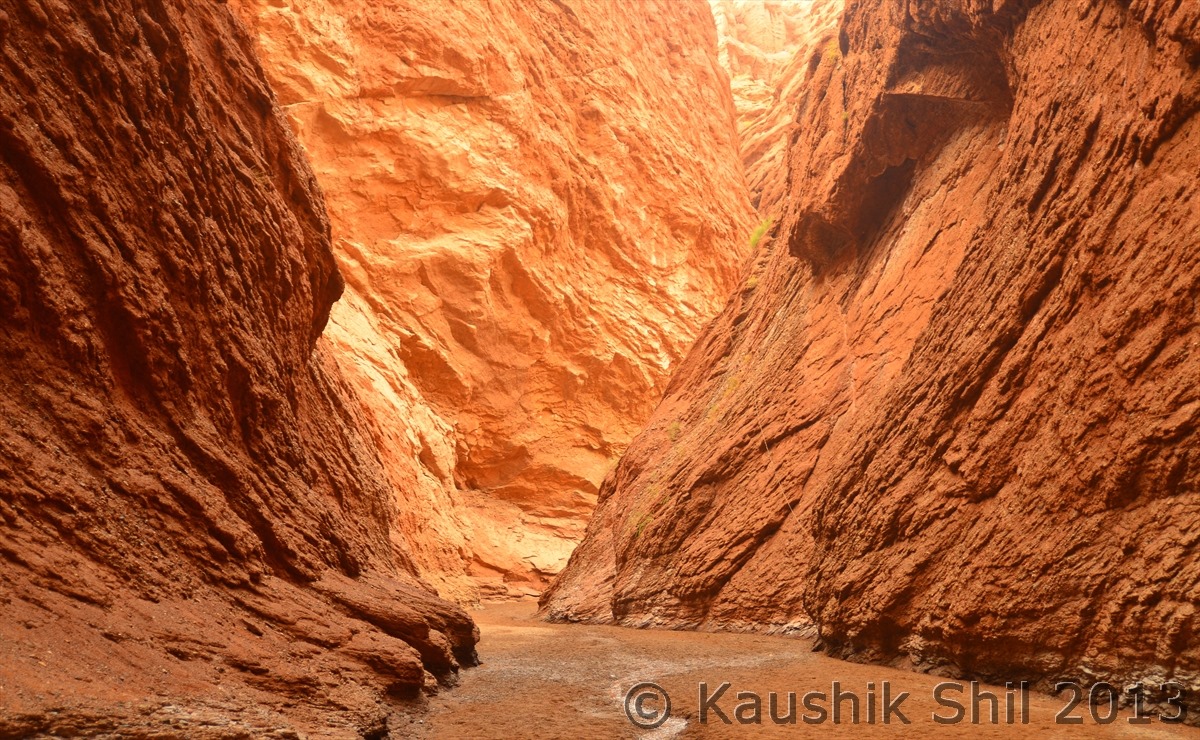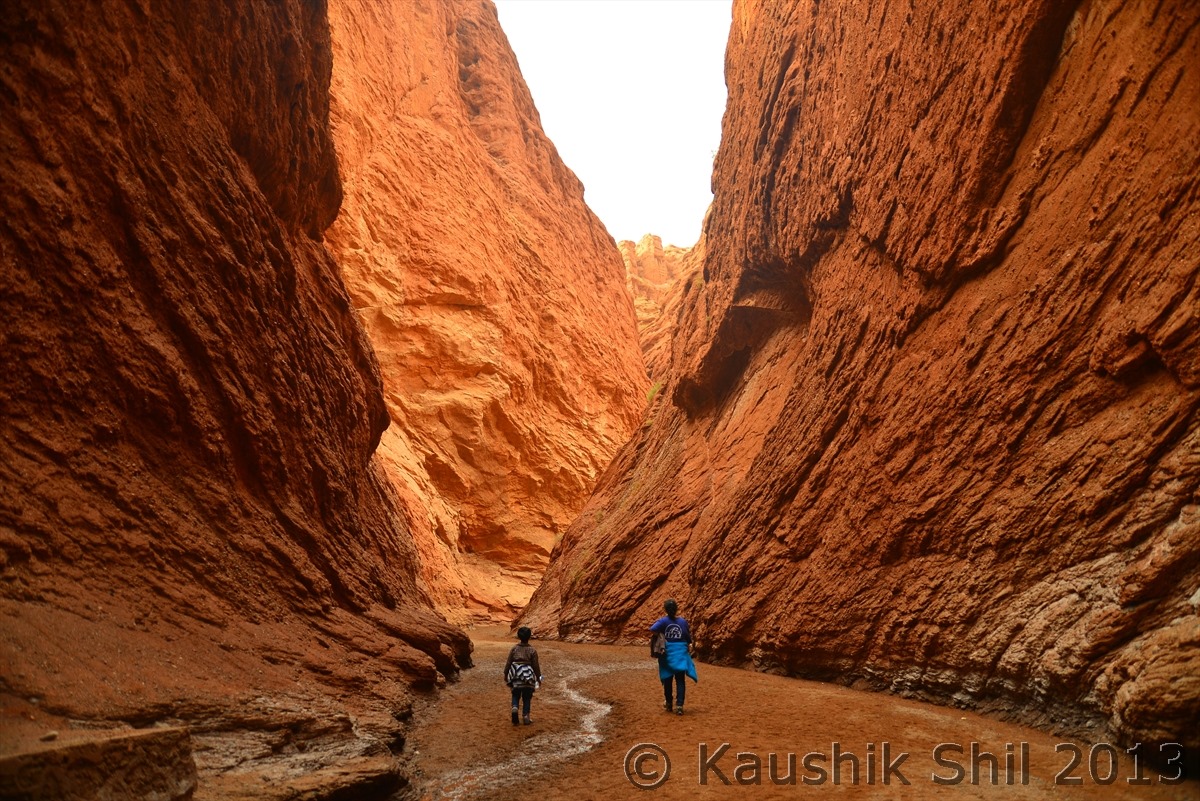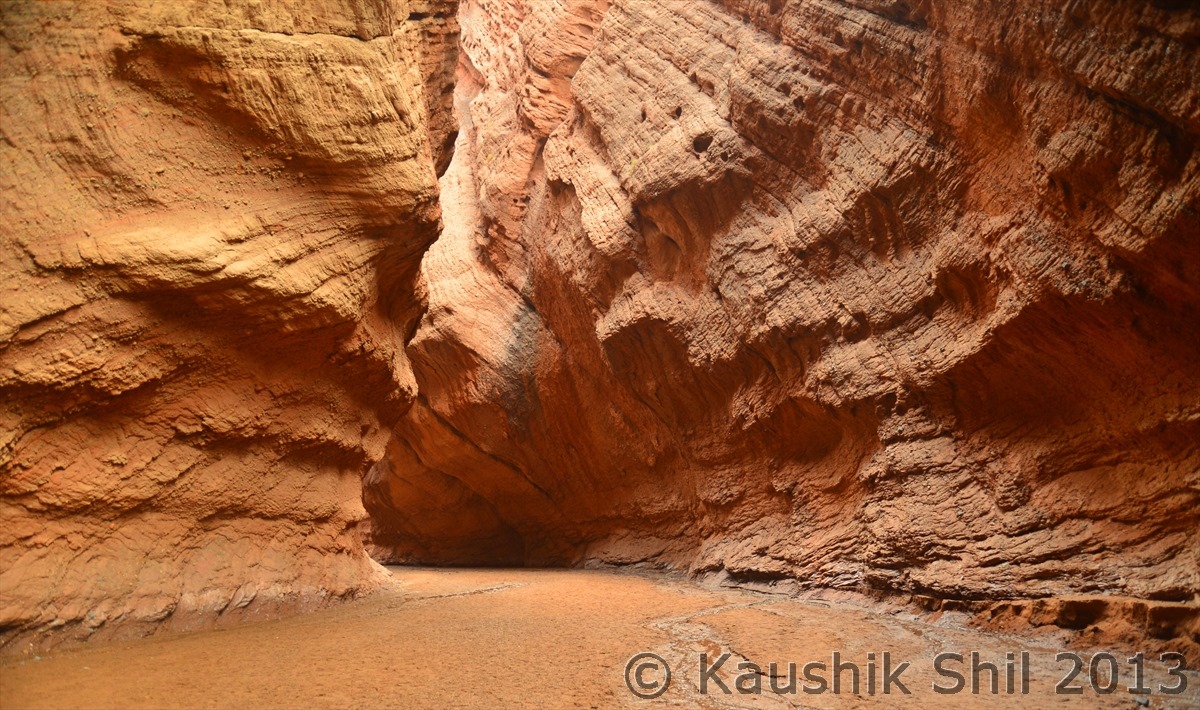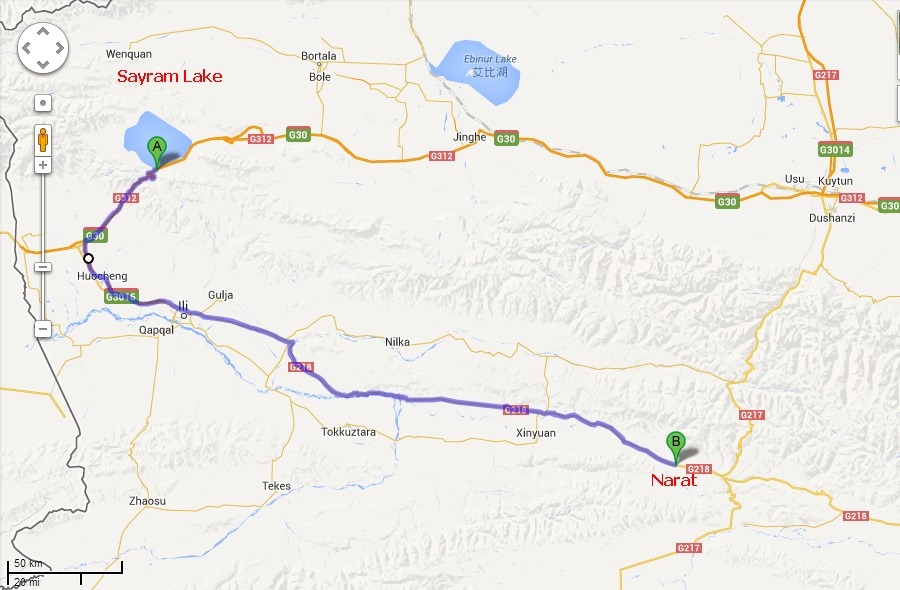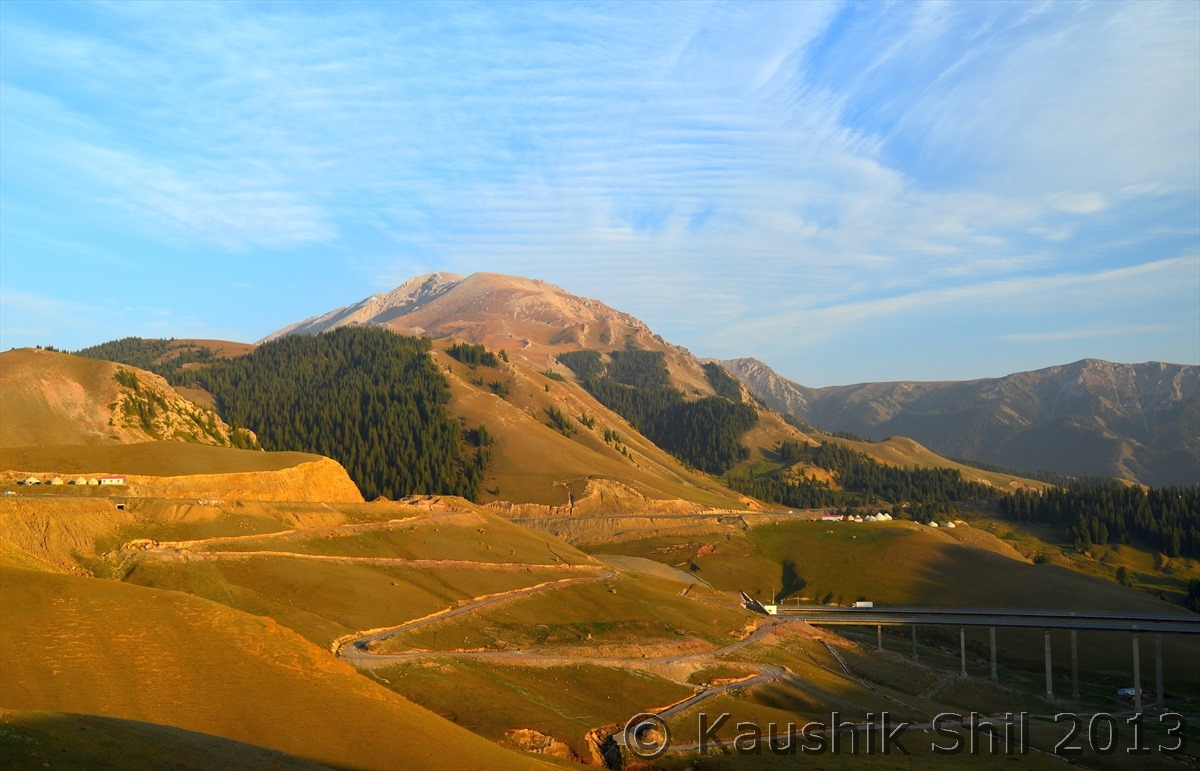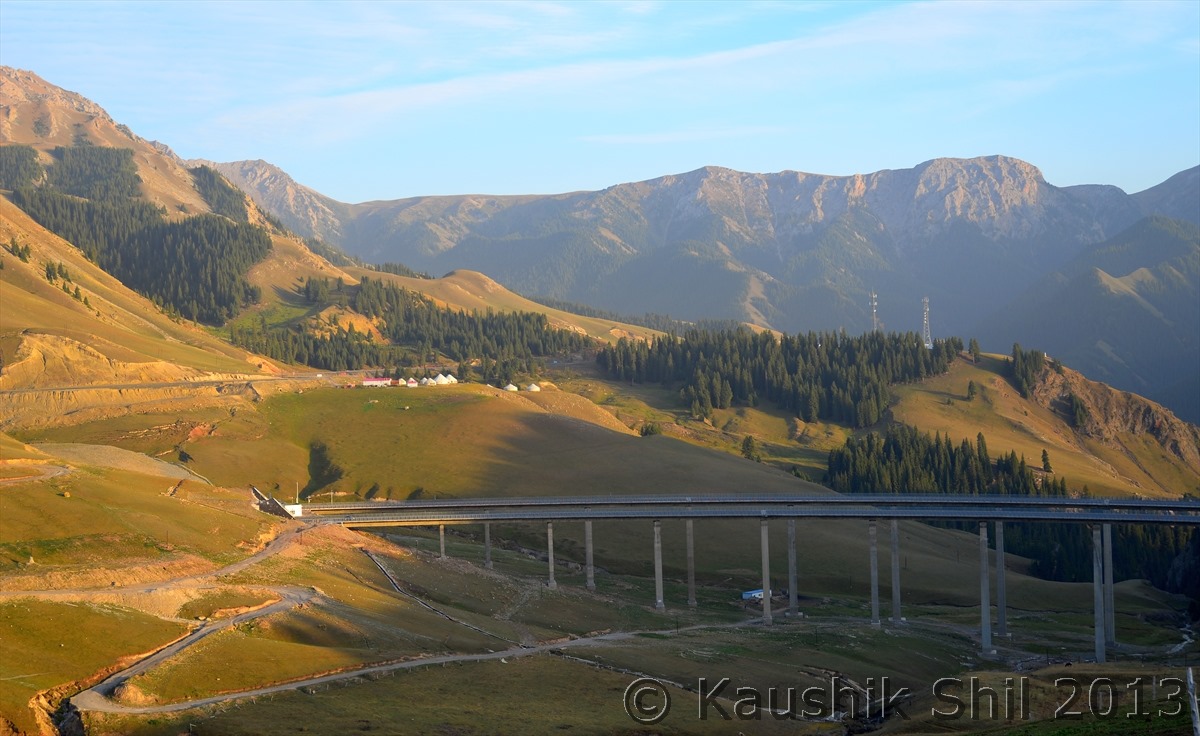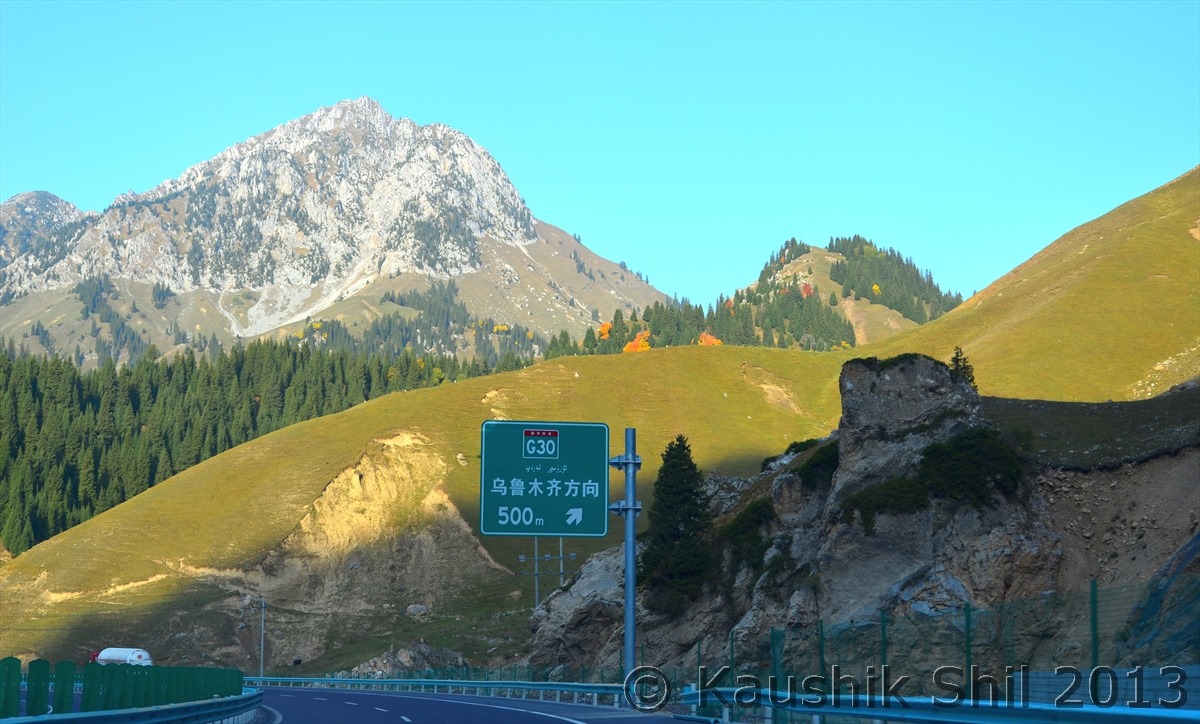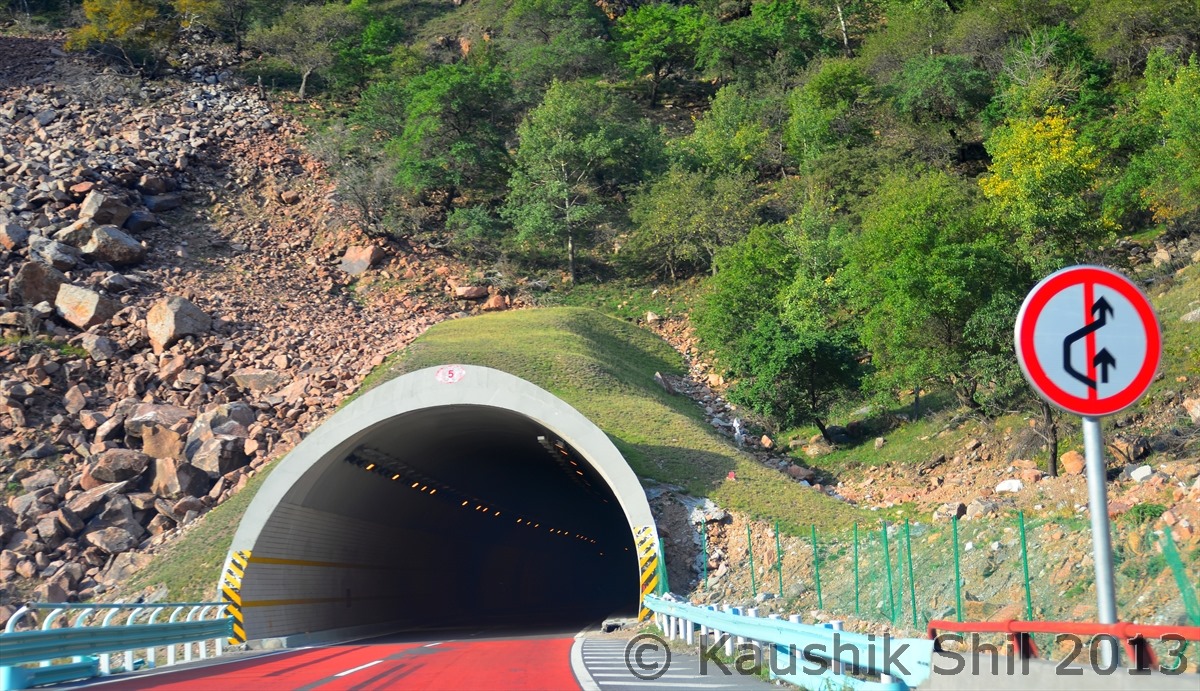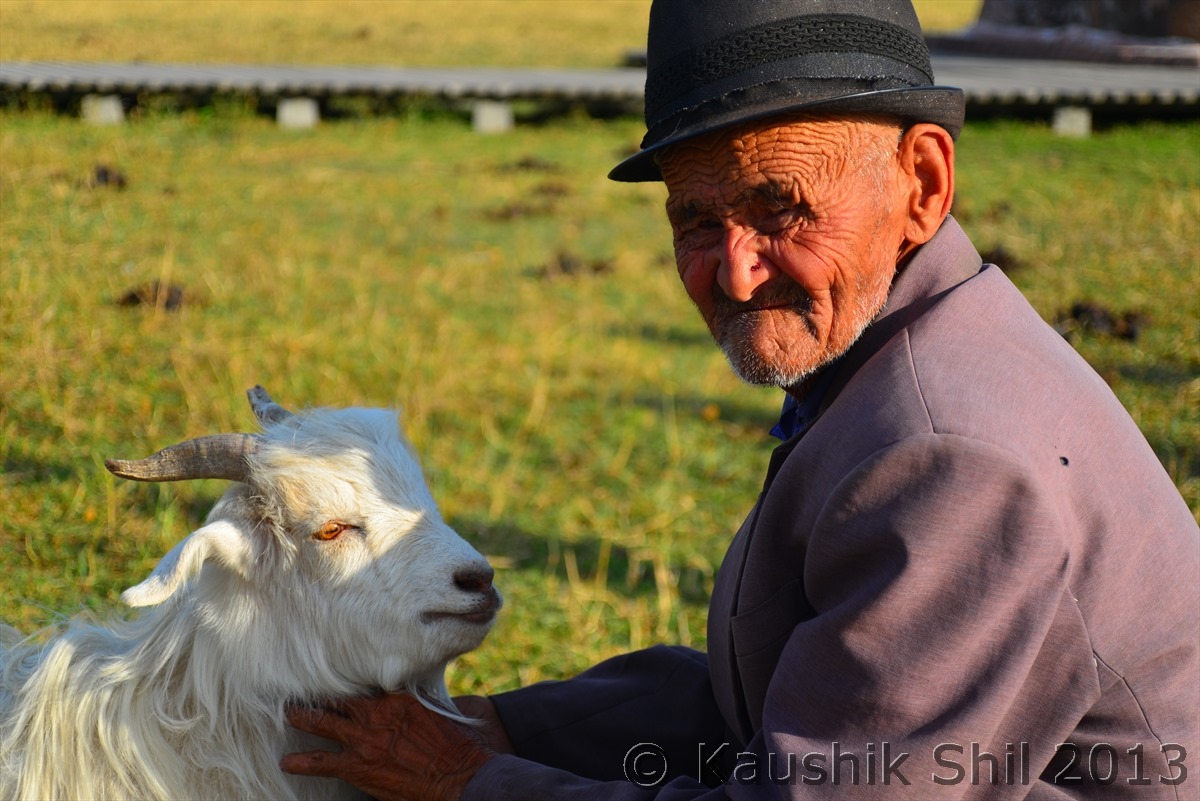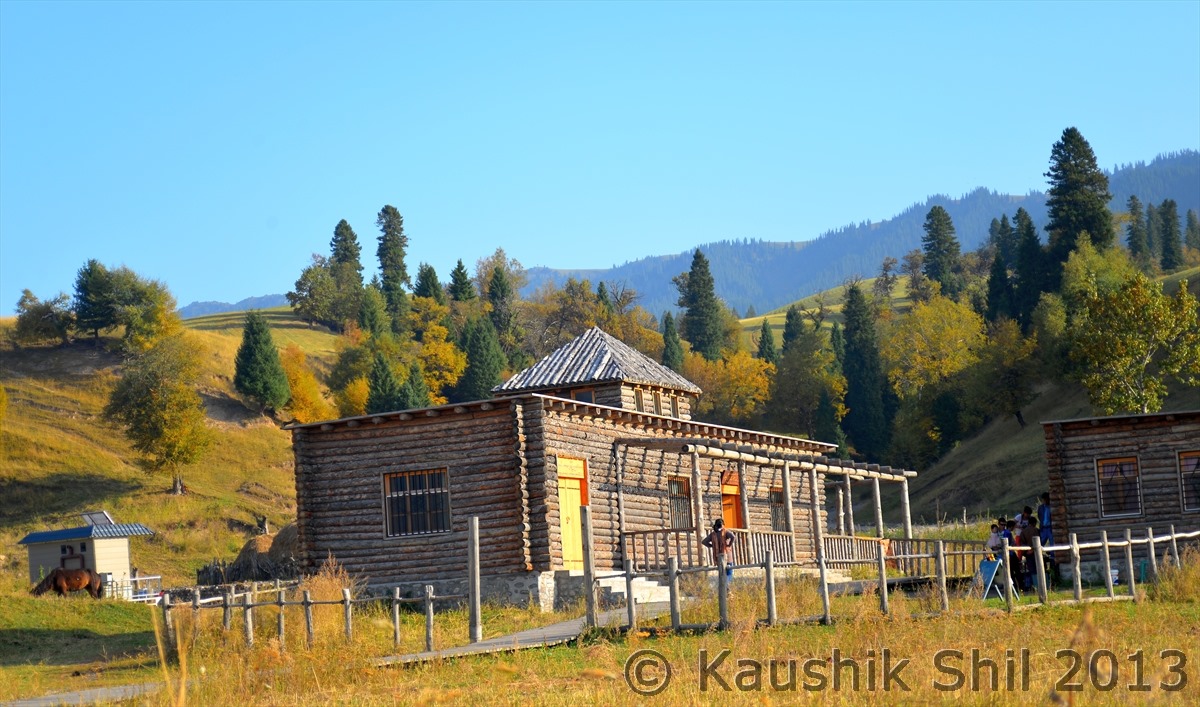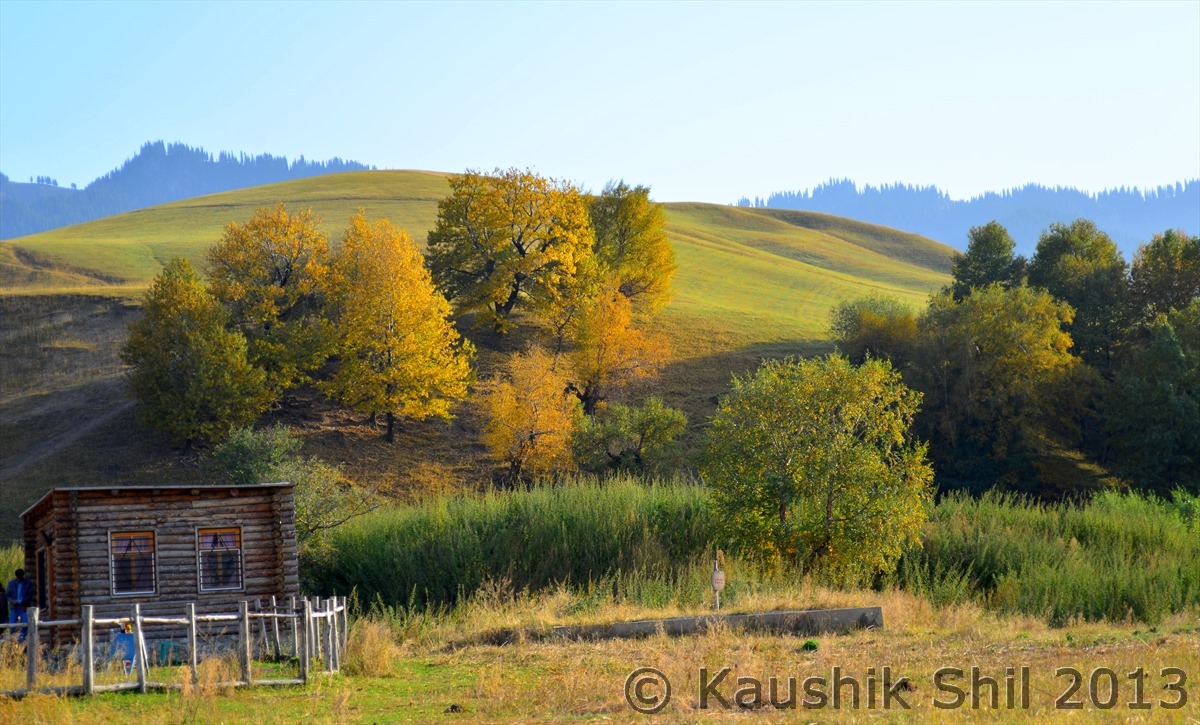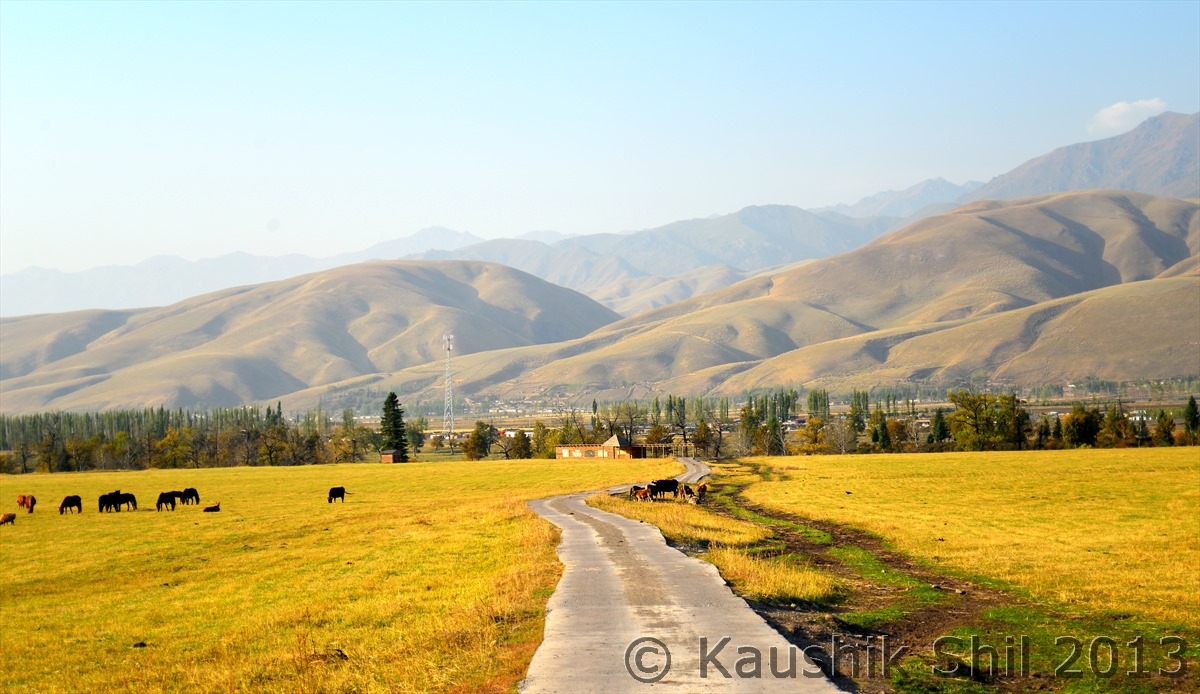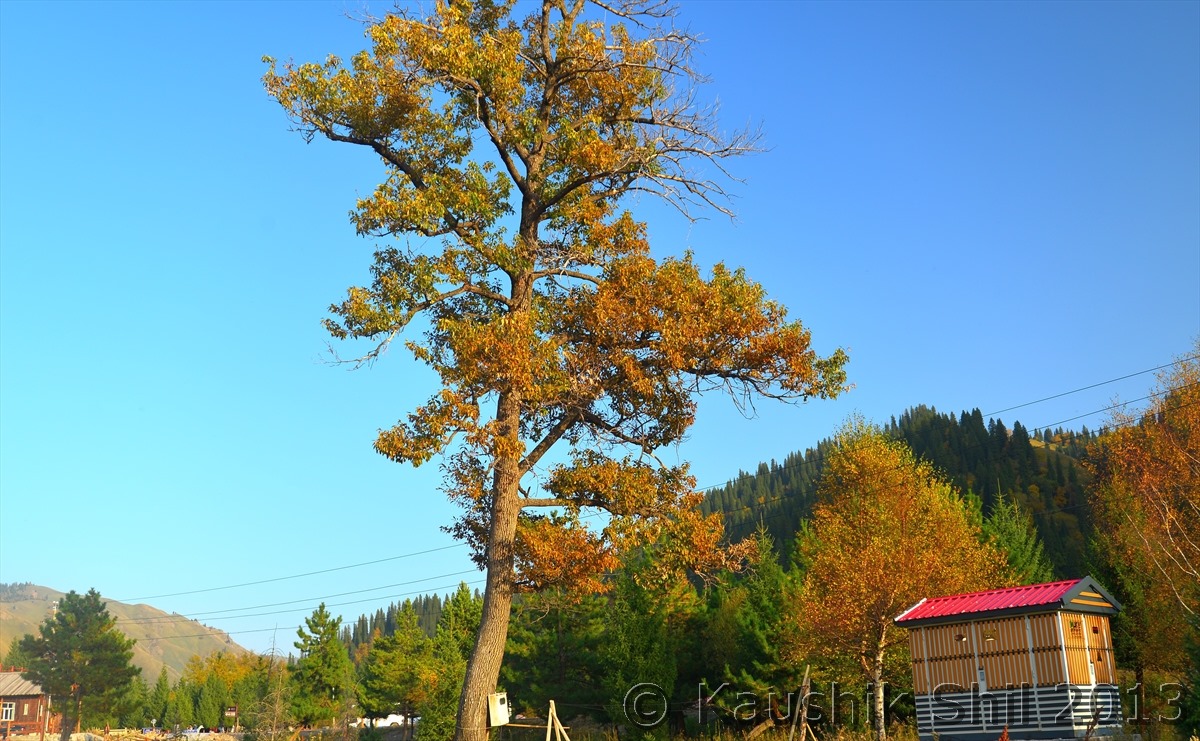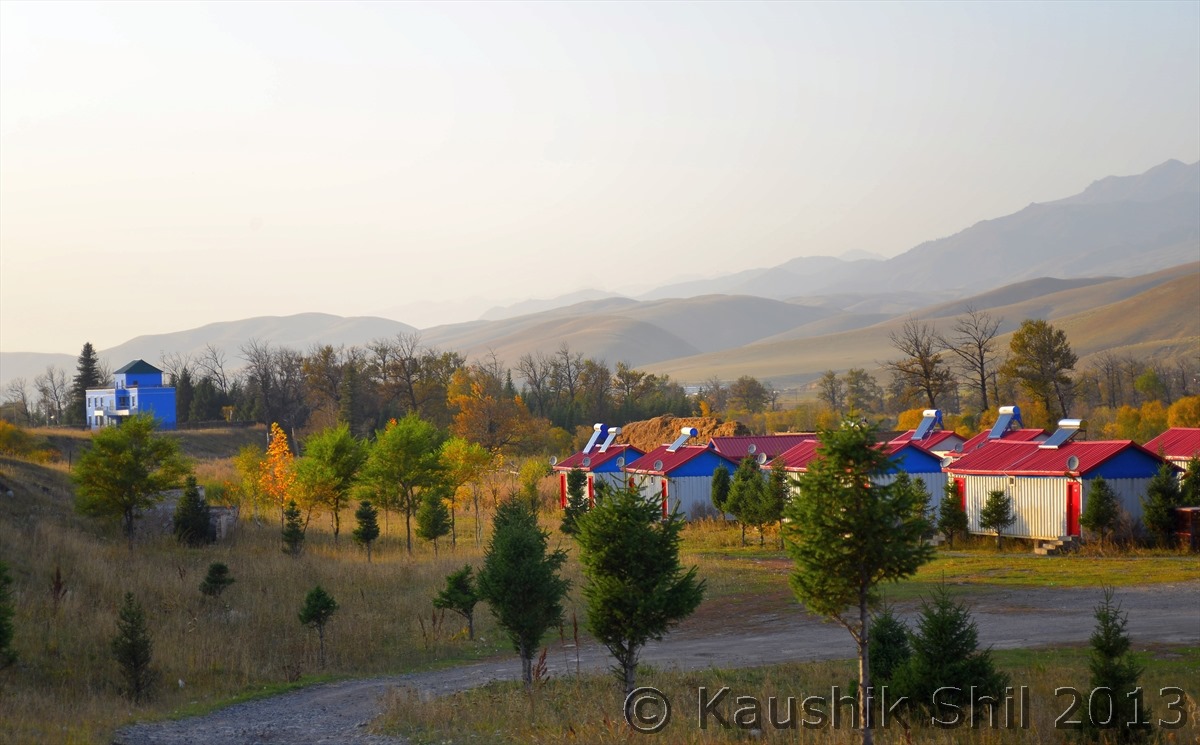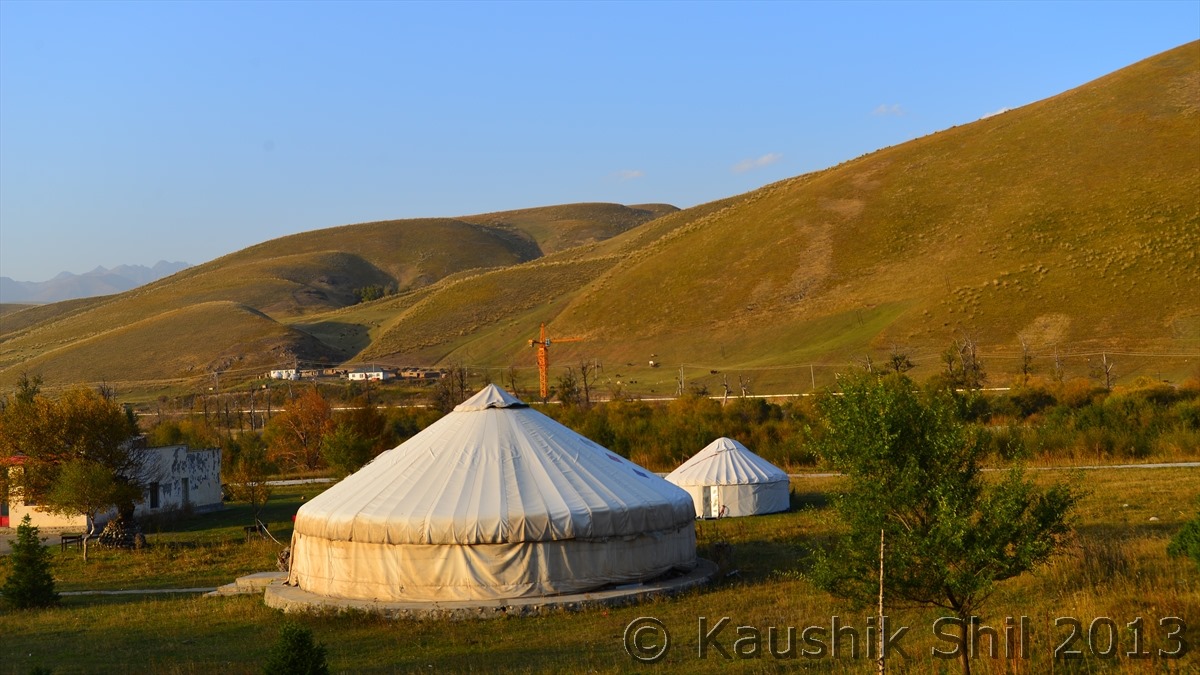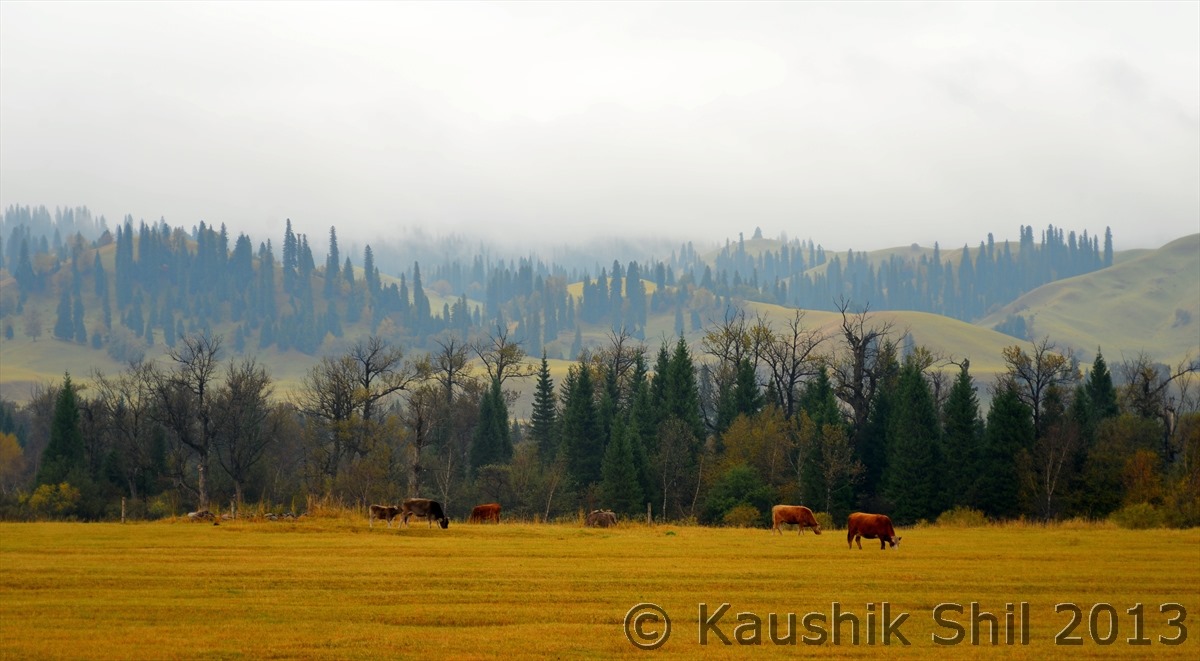Today’s Route:
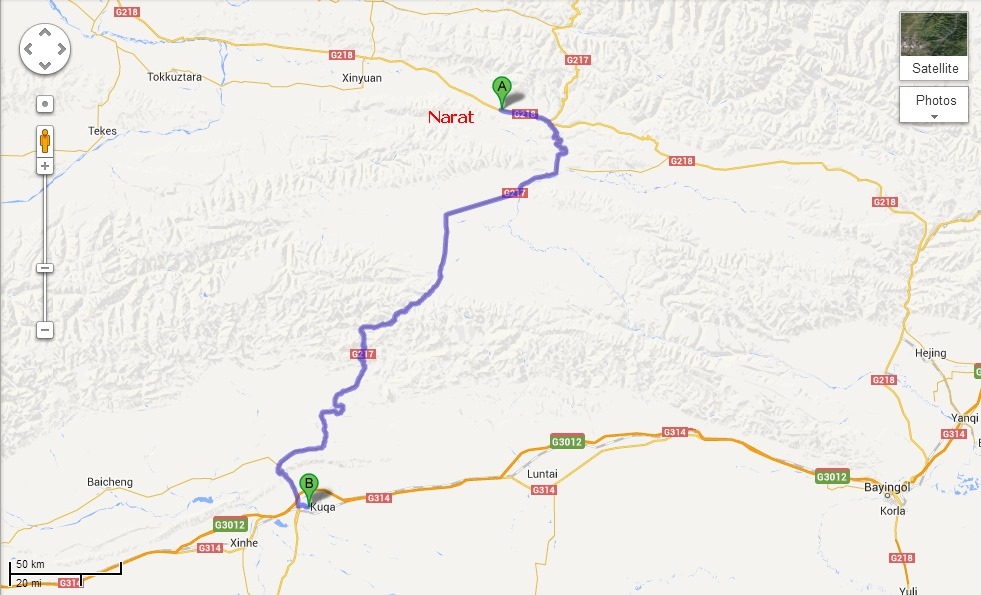
This would again be a long day for us and we were supposed to drive 550km to cross Tienshan mountain range to officially end our Northern Xinjiang trip and destination for the day was Kuqa (Pronounced as Kucha). We had once more a typical Chinese breakfast with Chop sticks (no spoon/fork would be available in the smaller towns) and quickly start the day by 9.30 morning. The road 218 leaves Narat and continues East following the river which by now is a rushing stone filled stream closely hemmed by spruce and pine trees. After few kilometers the road meets 217 (Which we left on Day6 at Kuytun) which is coming down South from Kuytun crossing Tienshan range through a tunnel and few passes before meeting and crossing 218 here and goes down south to Kucha on the Northern side of Tarim Basin, the northern edge of infamous Taklamakan Desert. Highway 217 from Kuytun to Kucha is famous for its spectacular and varied mountainscape, first it follows a river through a narrow canyon, then crosses lush grassland of Bayanbulak and then starts ascending to cross Southern Tienshan again to finally get down to Tarim Basin. We initially have plan to visit Bayanbulak as well and it’s famous Swan Lake home to the majestic Swan in China. This is also famous for multiple bends of Kaidu river in the middle of a huge prairie of lush grass like a giant gleaming serpent. But again with blooming flowers, majestic swans and serpentine flow of Kaidu river, summer is the ideal time to go there so finally we decided to drop this and also there was some confusion regarding an issue with permit to stay night there for foreigners.
South of Bayanbulak grassland, Highway 217 again enters mountain region of Southern Tienshan and around 70 km north of Kucha it passes through Tienshan Grand Canyon, 6 km long canyon is a wonder of nature with thin pinnacles, overhanging wall and heavily eroded red rock. The narrowest part of Canyon was even less than half a meter and it was an amazing experience to walk down the narrow canyon. We finally reached Kuqa around 7.00 in evening and this was the place where our first part of Xinjiang trip was being over. Ablajan was booked for the Chinese golden holiday week with a French group and also I decided to start my Southern Xinjiang trip with a local driver and guide and here I met another excellent Uighur gentleman in his early thirty, Hasan who was also an excellent guide, a very safe driver and awesome host. Hasan lives at Kashgar and he took almost a 10 hours drive for me from Kashgar to pick me up at Kuqa. We would visit tomorrow the Kuqa area as this was one of the major hub of old silk route and cradle of Buddhism in China. We were booked in another 4 star hotel here (Hotel Lidu) by Ablajan and this hotel was indeed one of the best in our entire stay in China. We said good bye to Ablajan for his excellent guidance over last one week and promised to meet him again at Urumqi for the last part of our Xinjiang trip to Turpan after our visit to Southern Xinjiang. Hasan was equally punctual and disciplined and entirely professional and I must admit my good luck with finding exceptionally good drivers and guides was continued in China too.
First few kilometers the Highway 218 passes through the Narat Grassland:
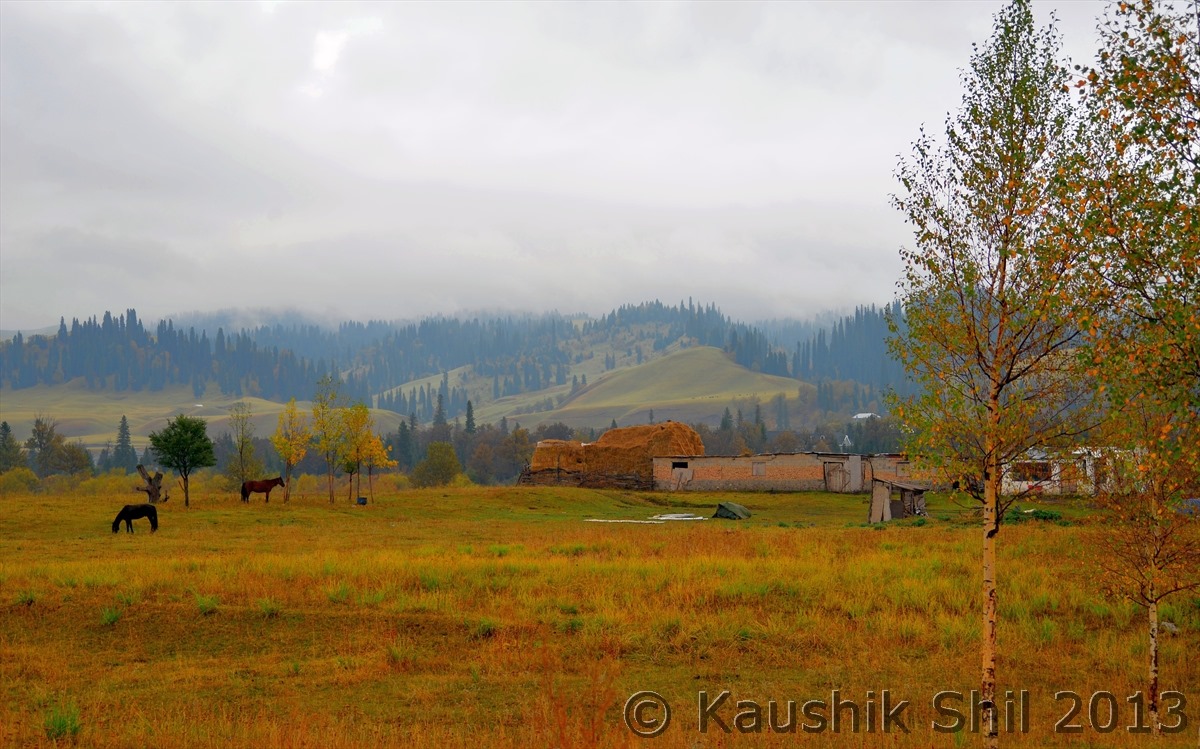
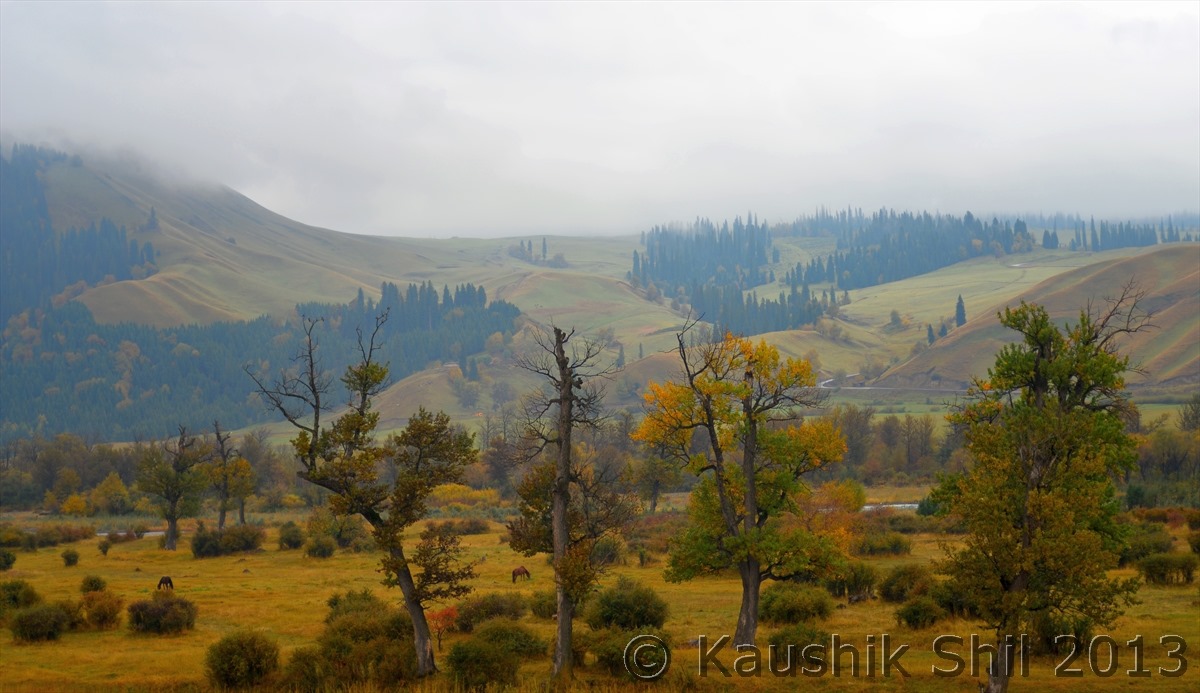
The Road follows the mountain stream:
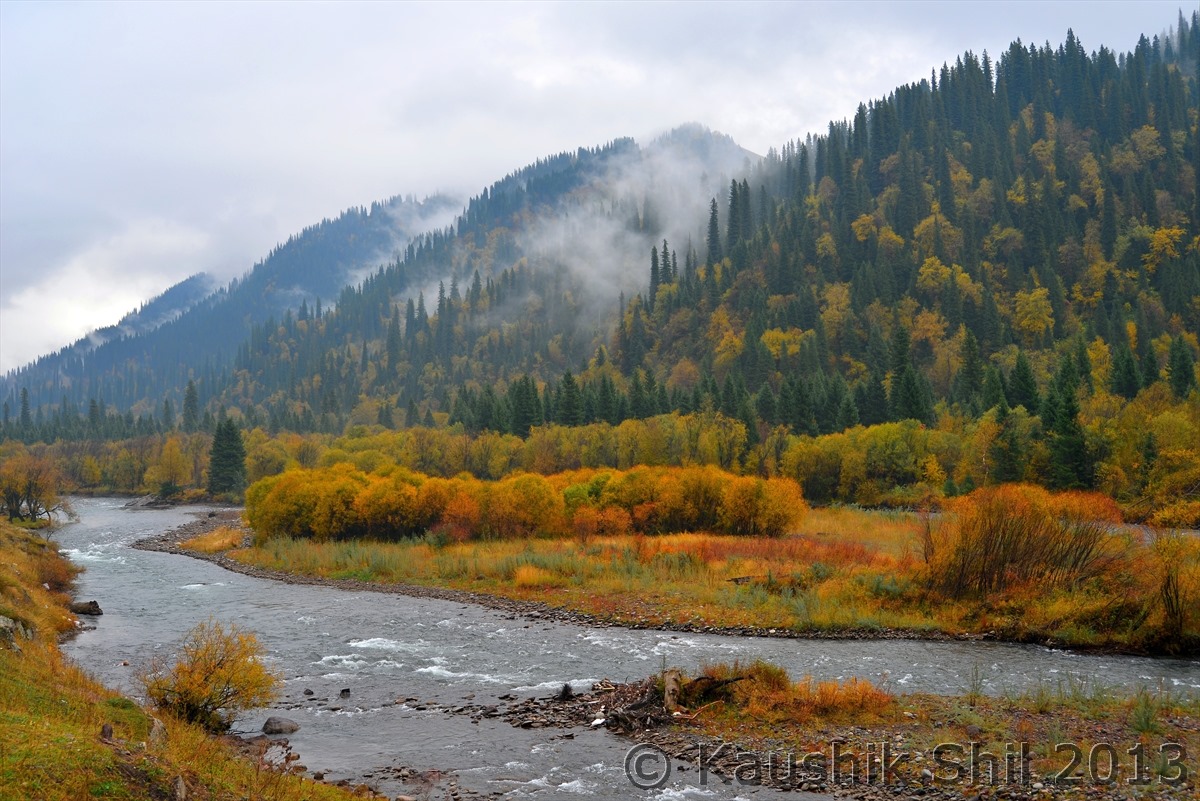
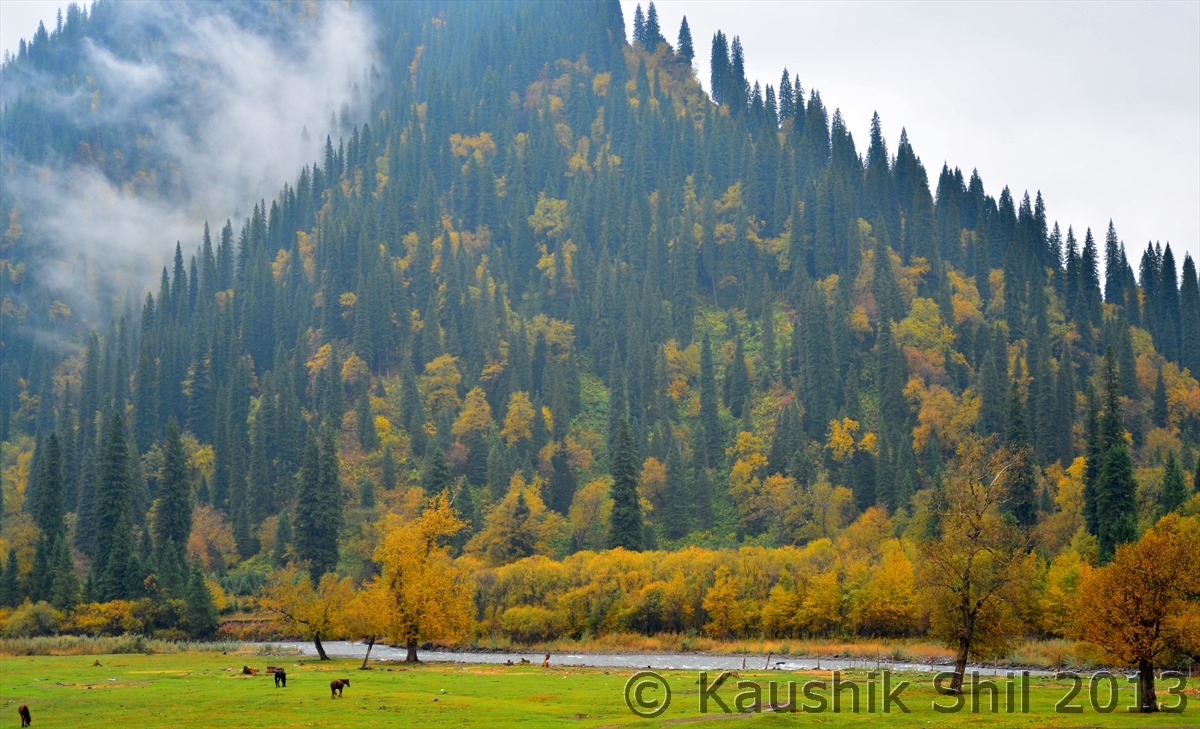
Soon after the crossroads with Highway 217, we took 217 towards South crossing Tienshan Range:
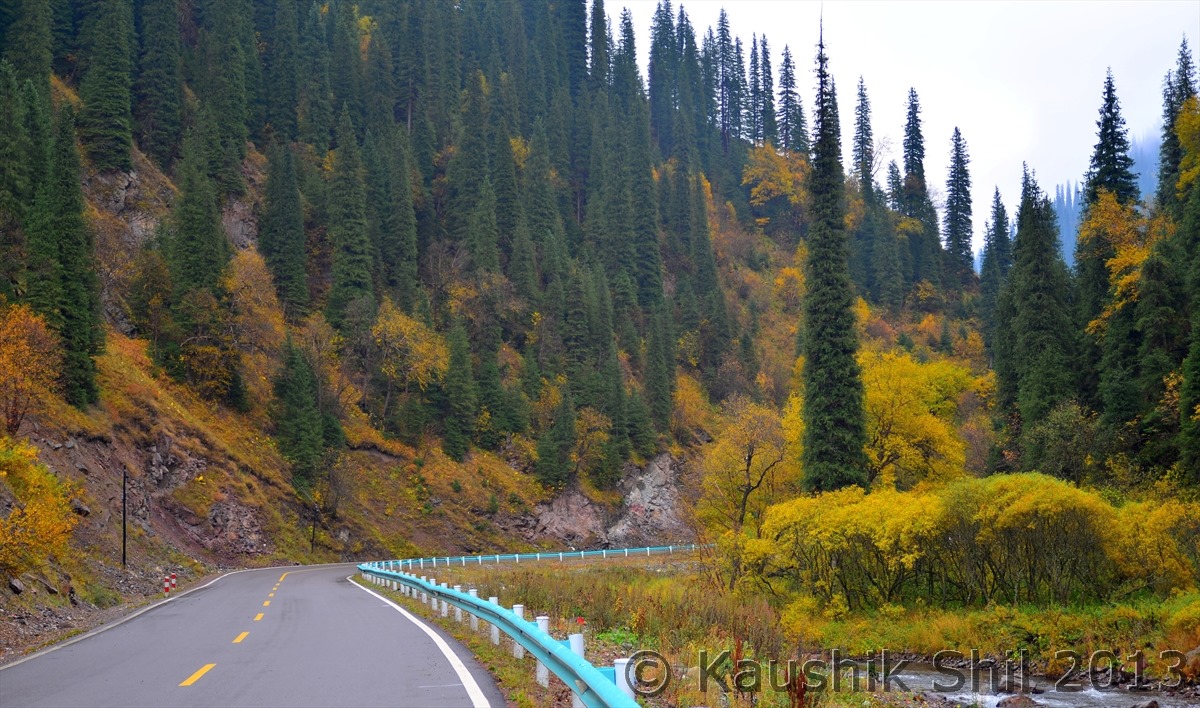
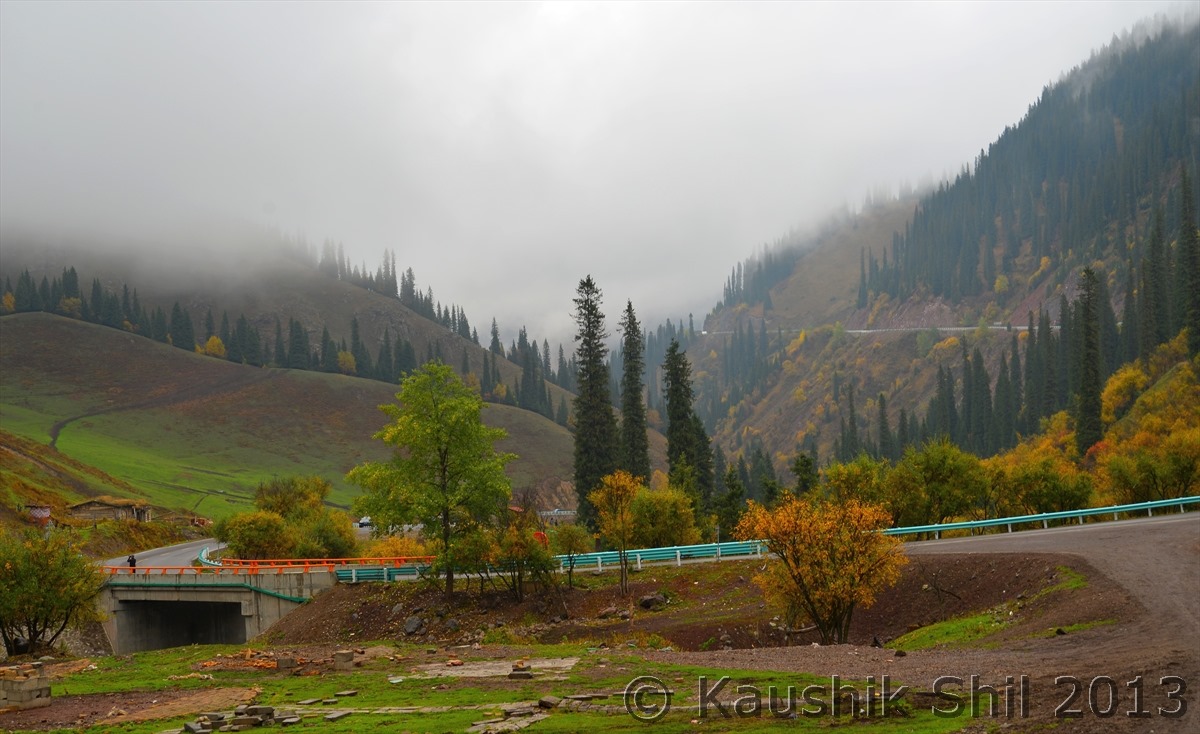
Highway 217 crosses the extremely beautiful Tienshan Mountain Section:
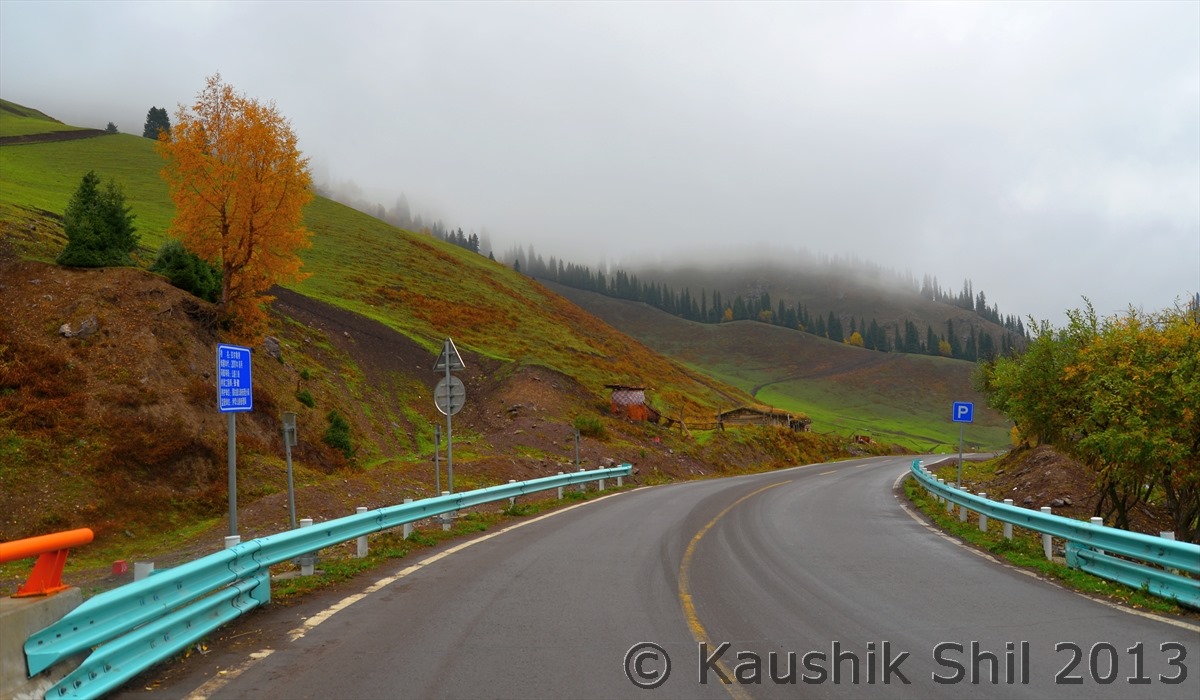
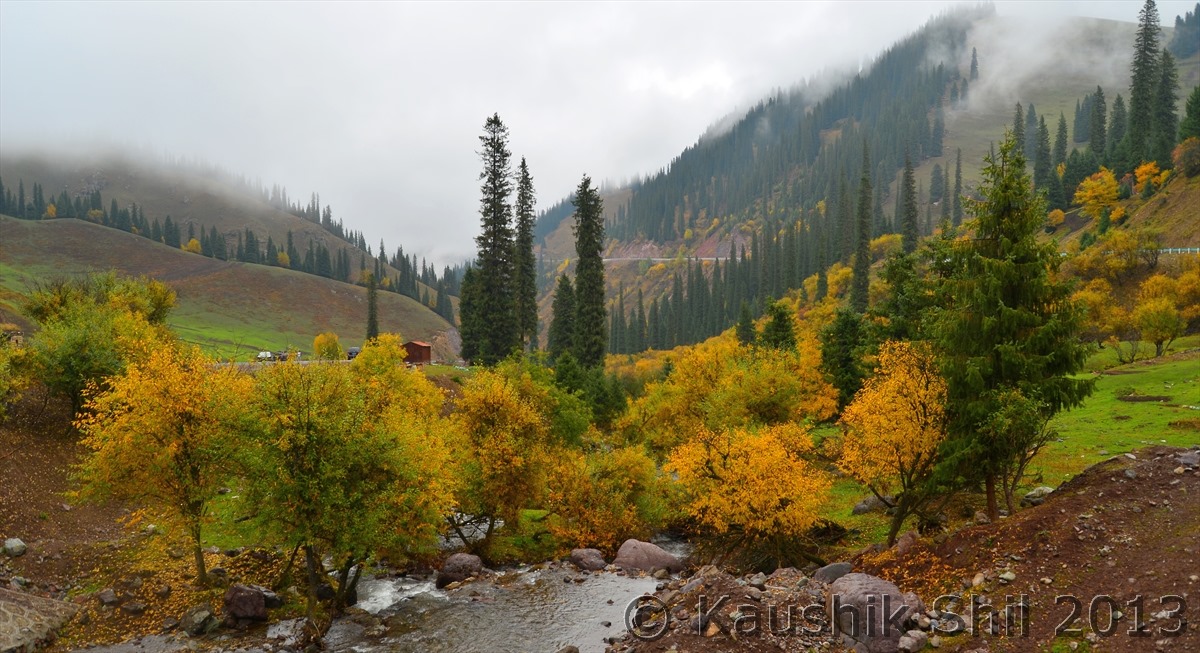
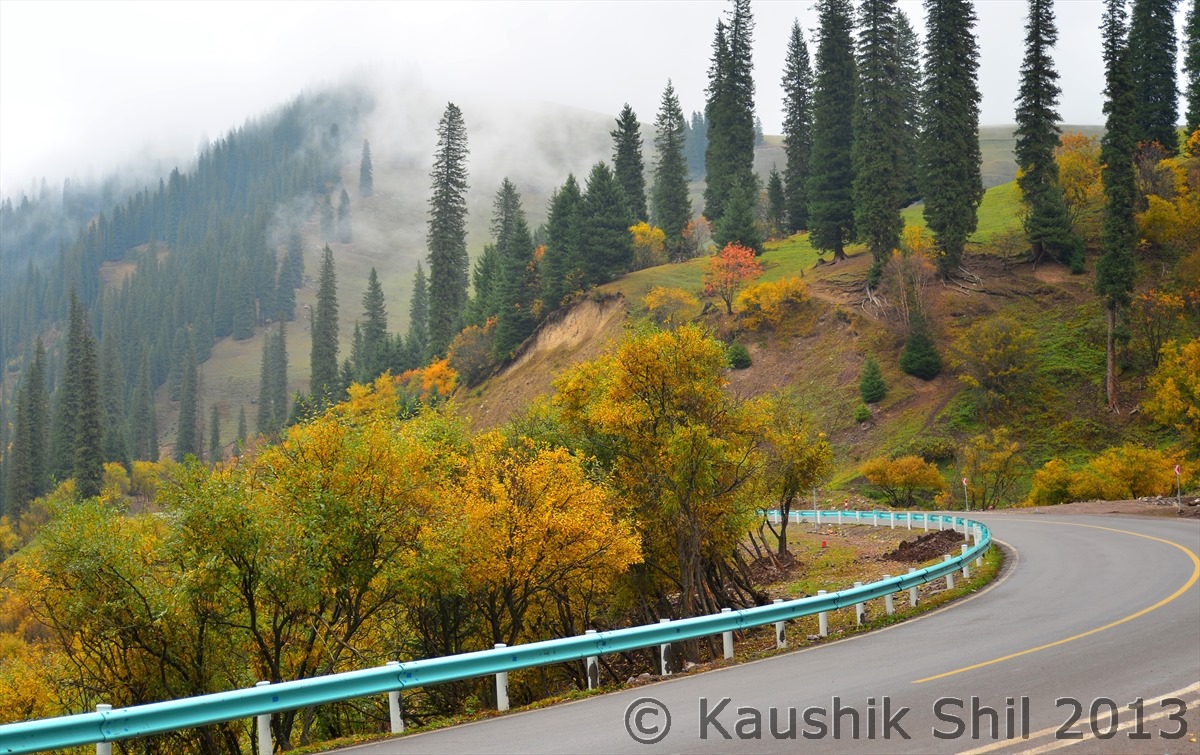
After Crossing the Tienshan Mountain ranges, 217 hits the Bayanbulak Grasslands:
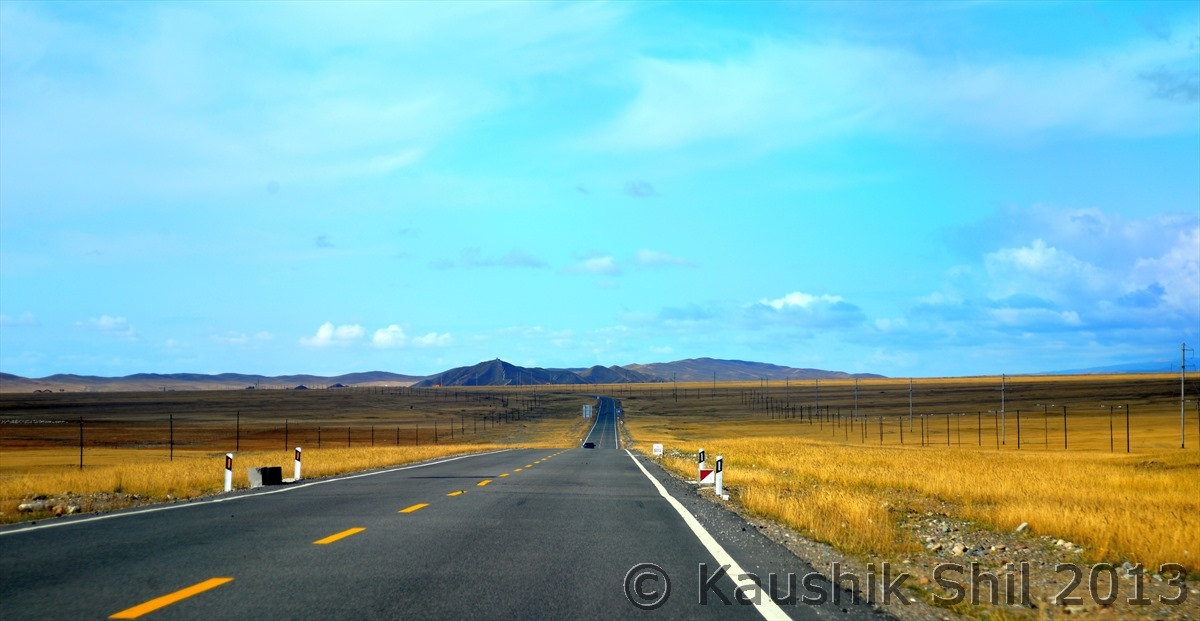
Bayanbulak Town:
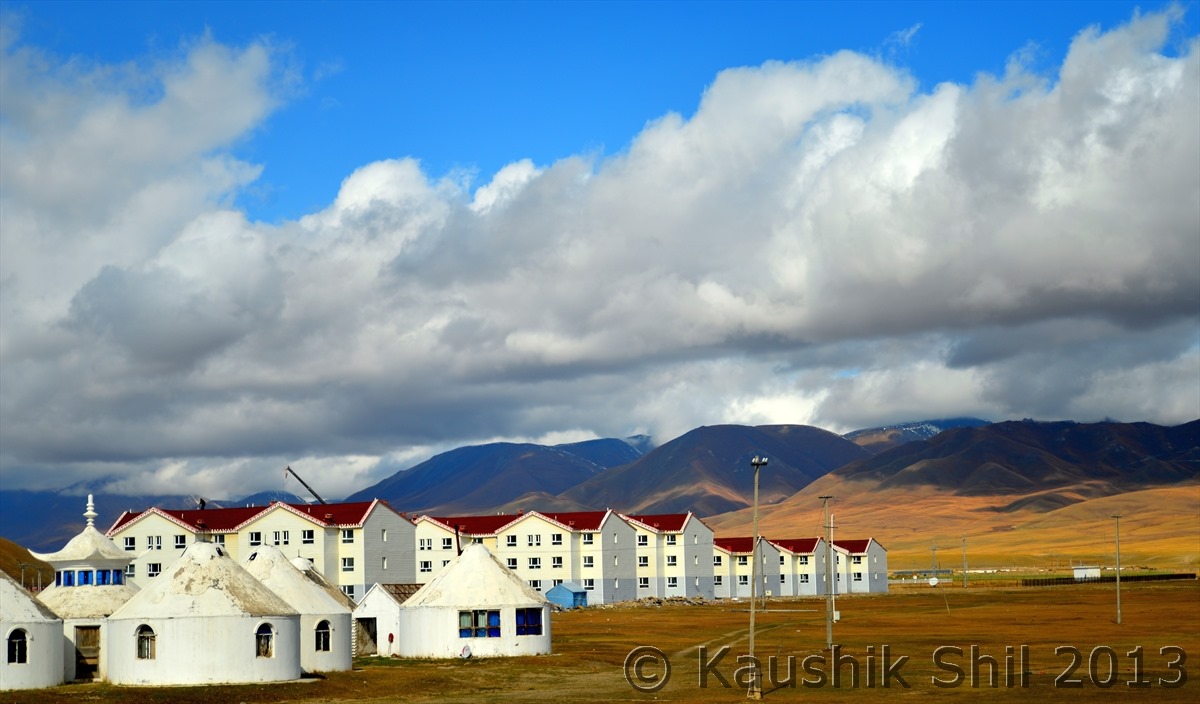
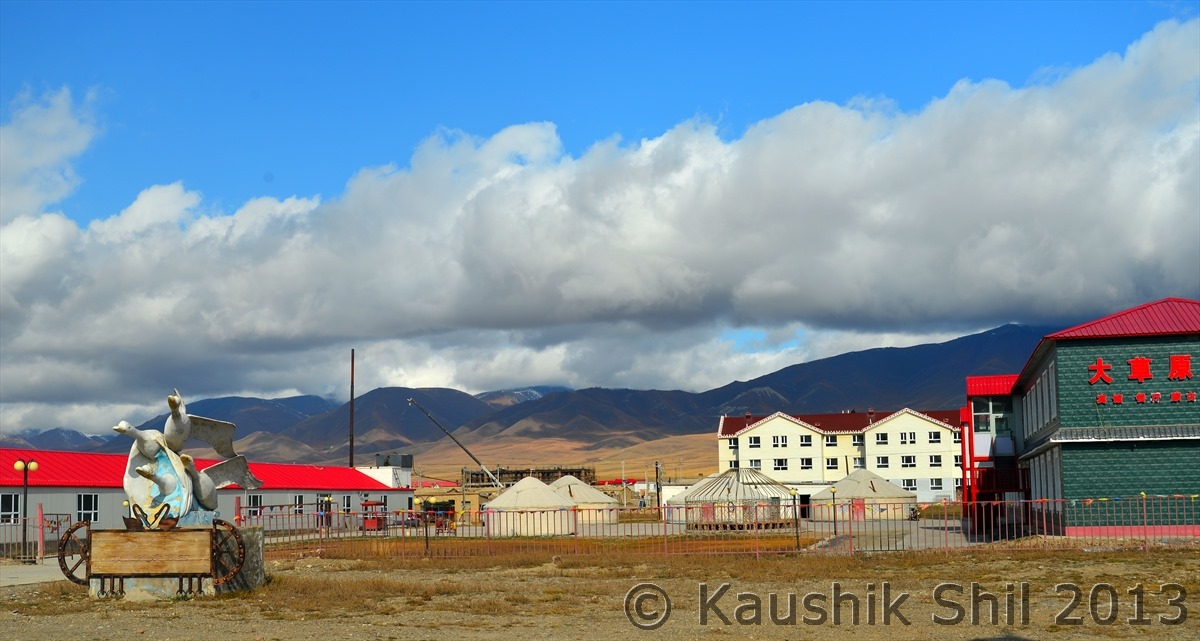
Bayanbulak Town:
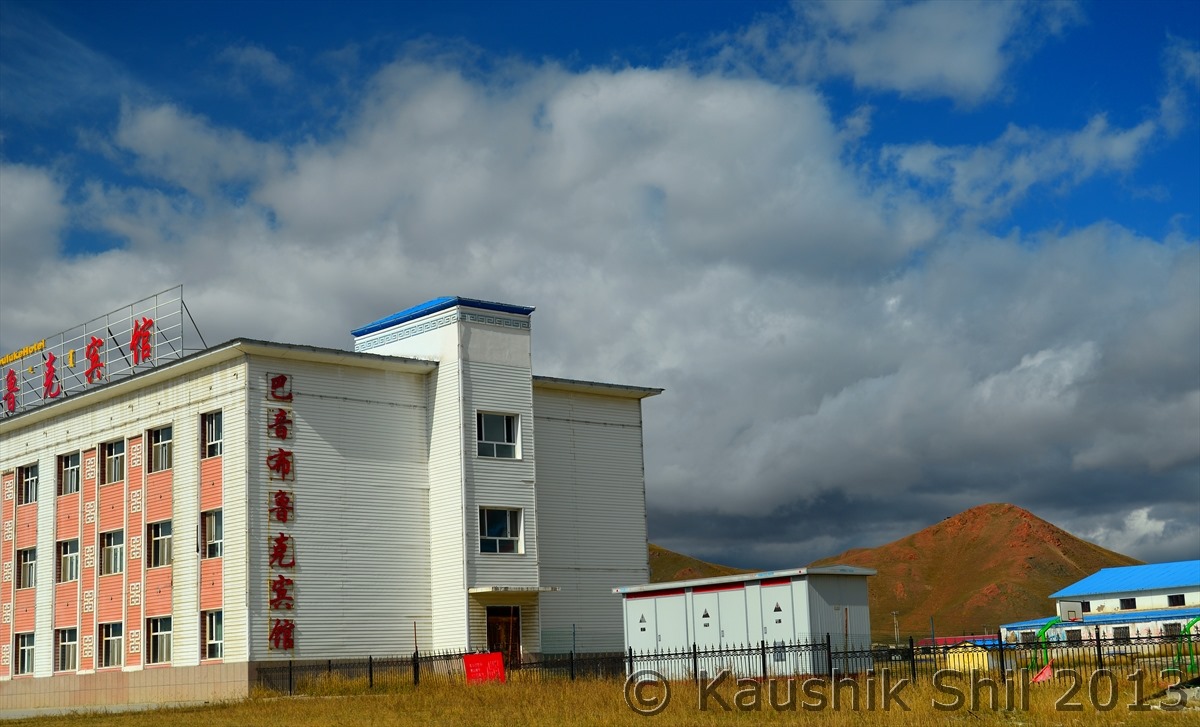
The vast pastureland is amazing :
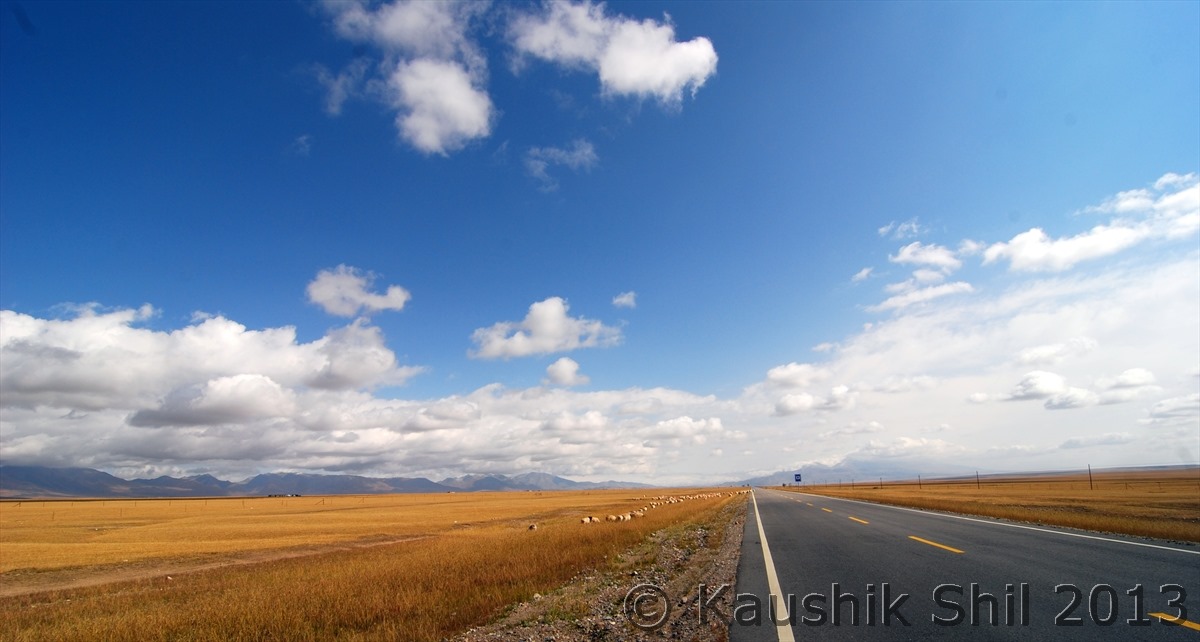
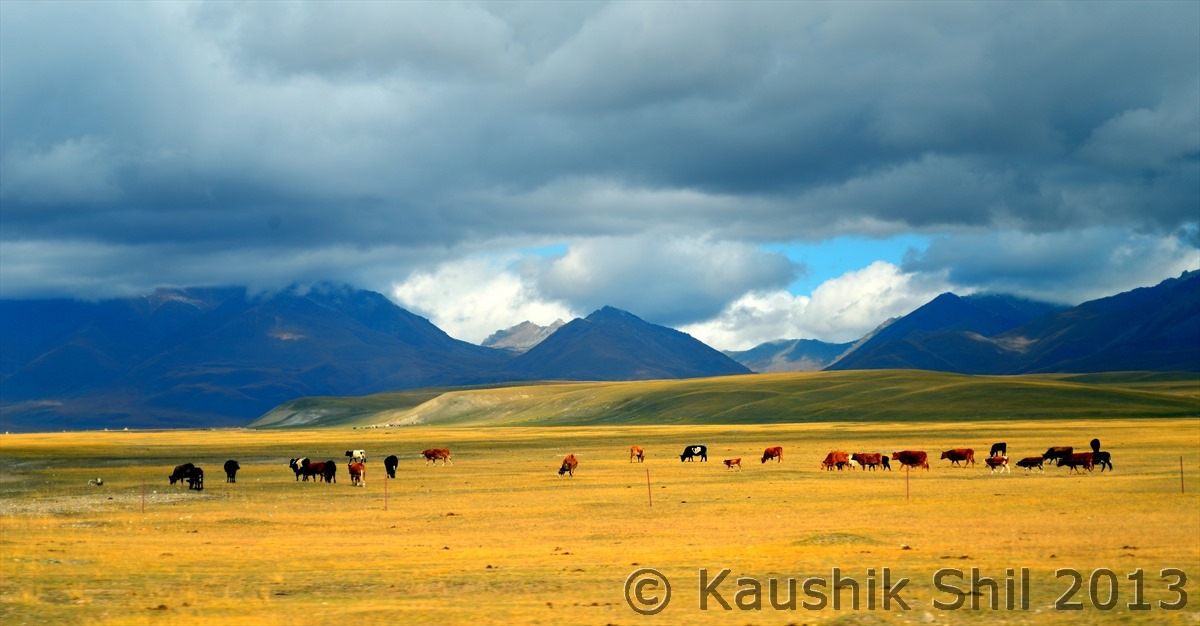
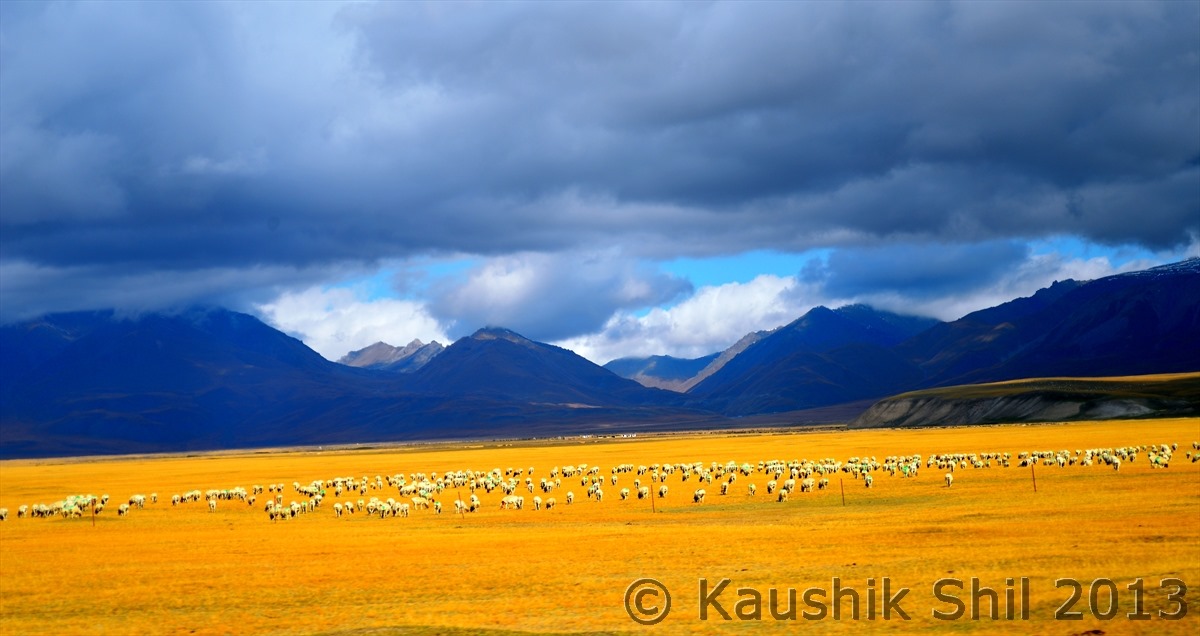
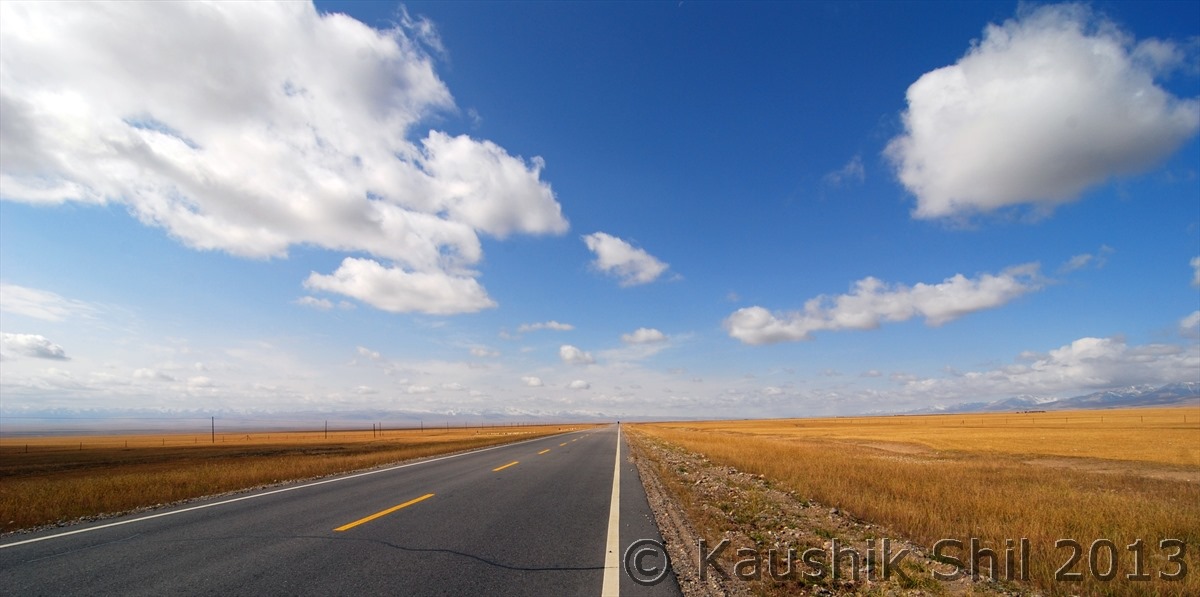
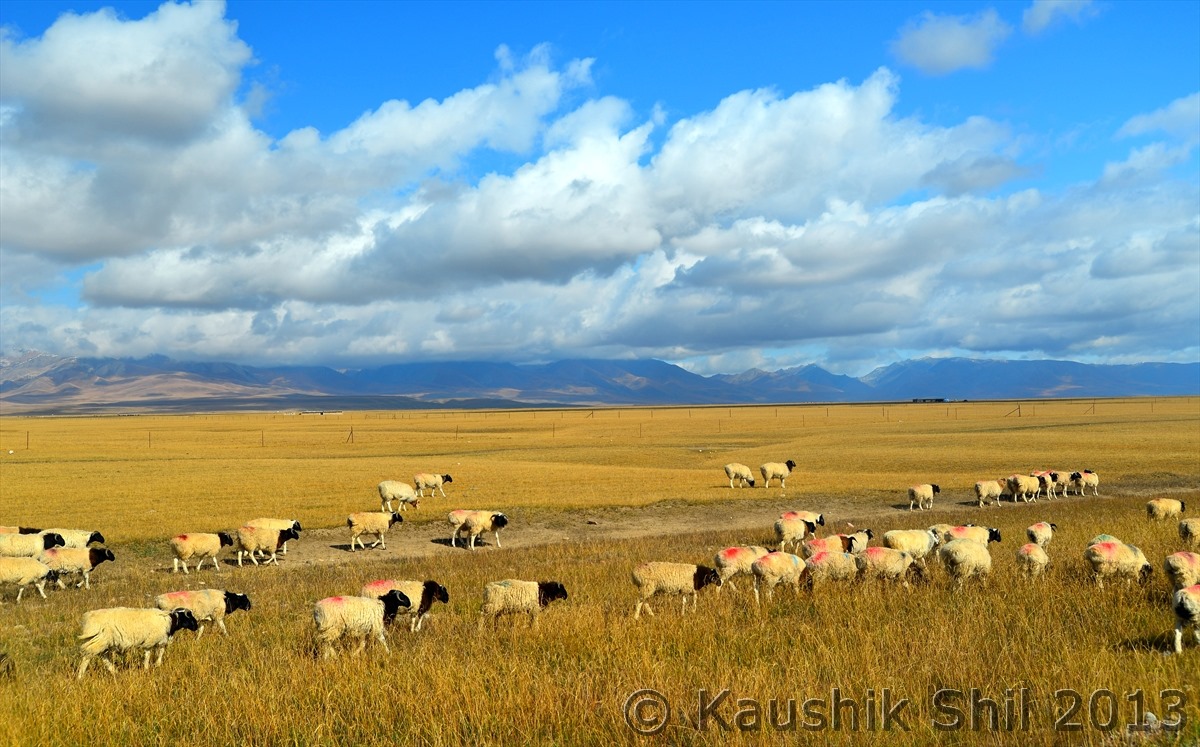
Now reached almost at the end of the Bayanbulak Grassland:
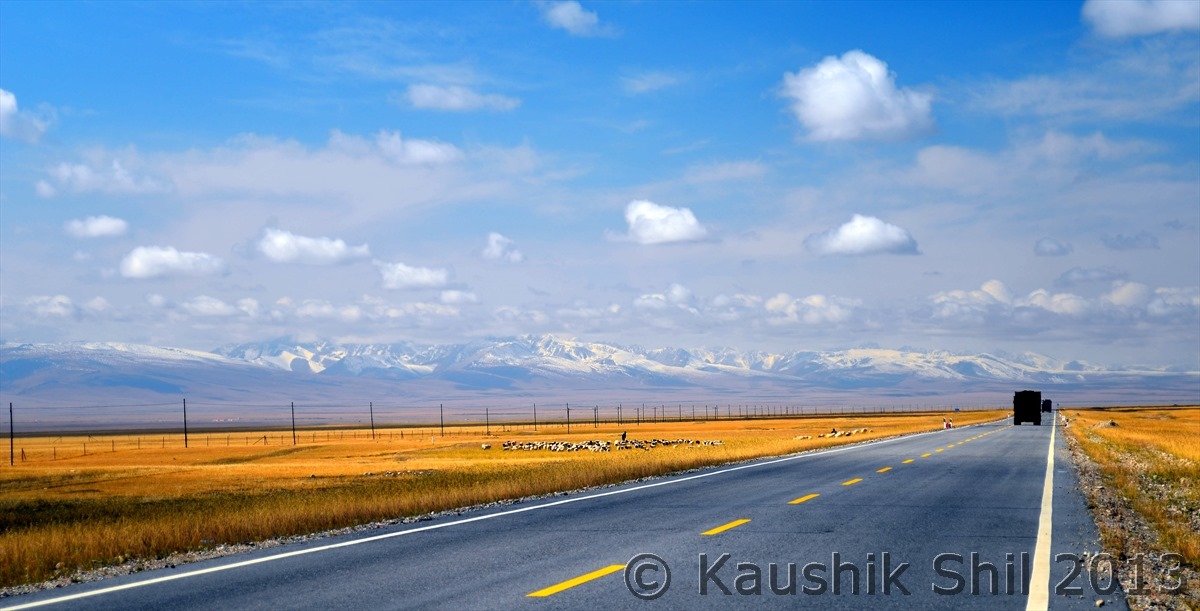
The valley started getting narrower:
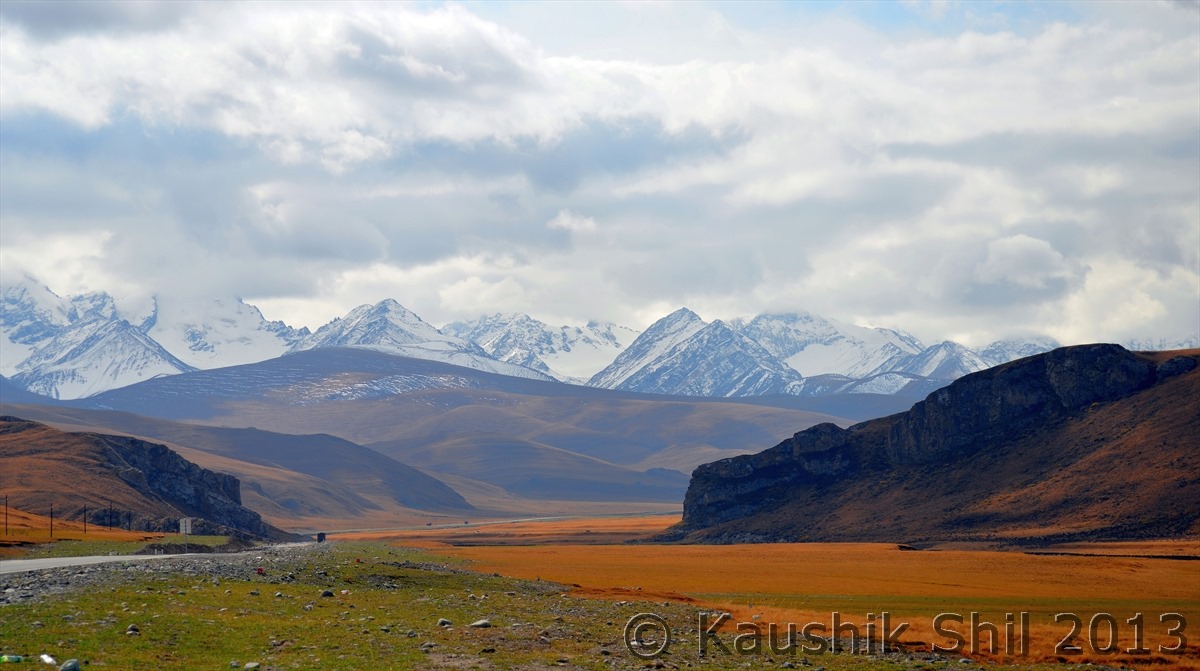
Previous: Day 7
Next: Day 8/Part 2
